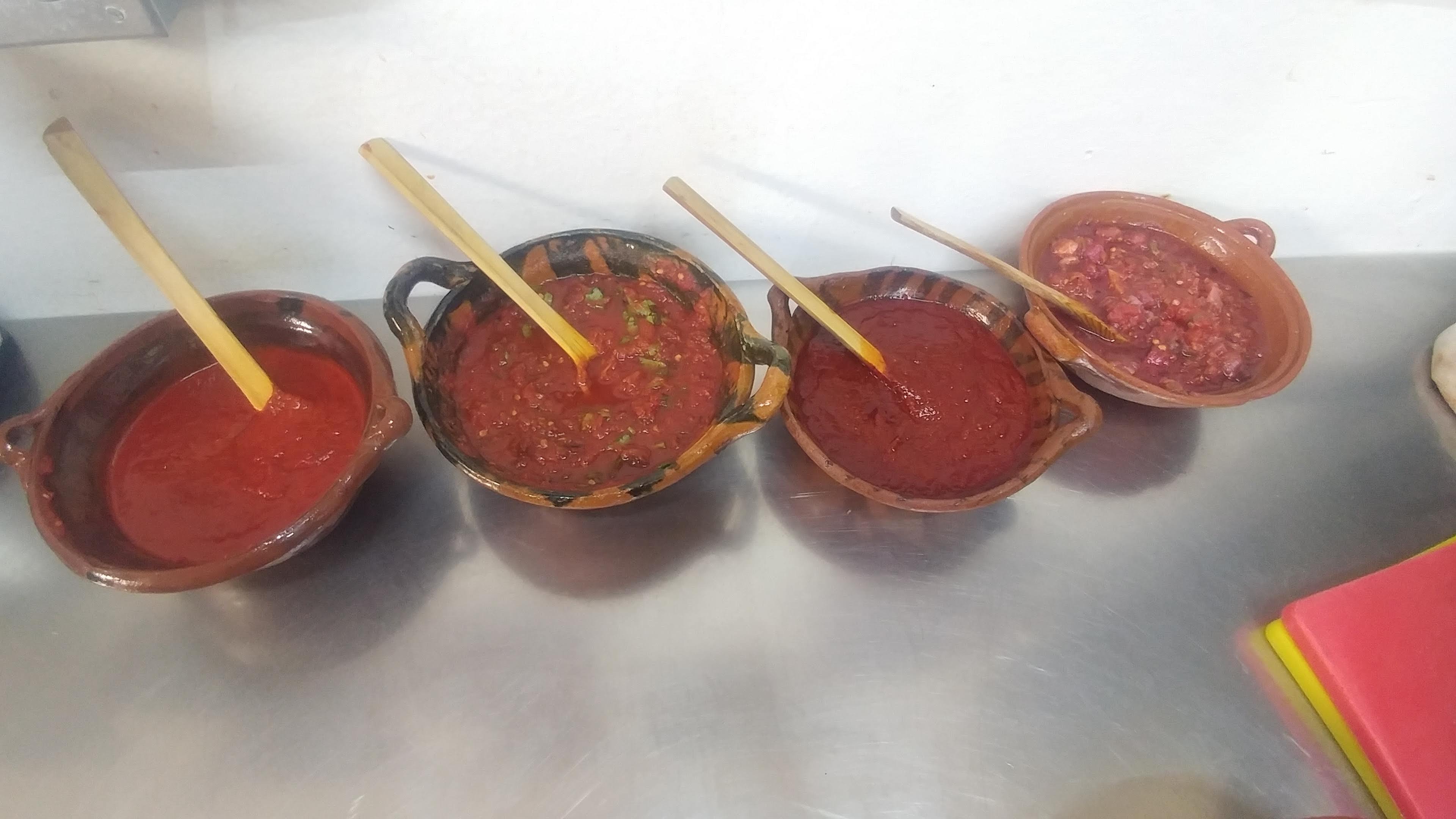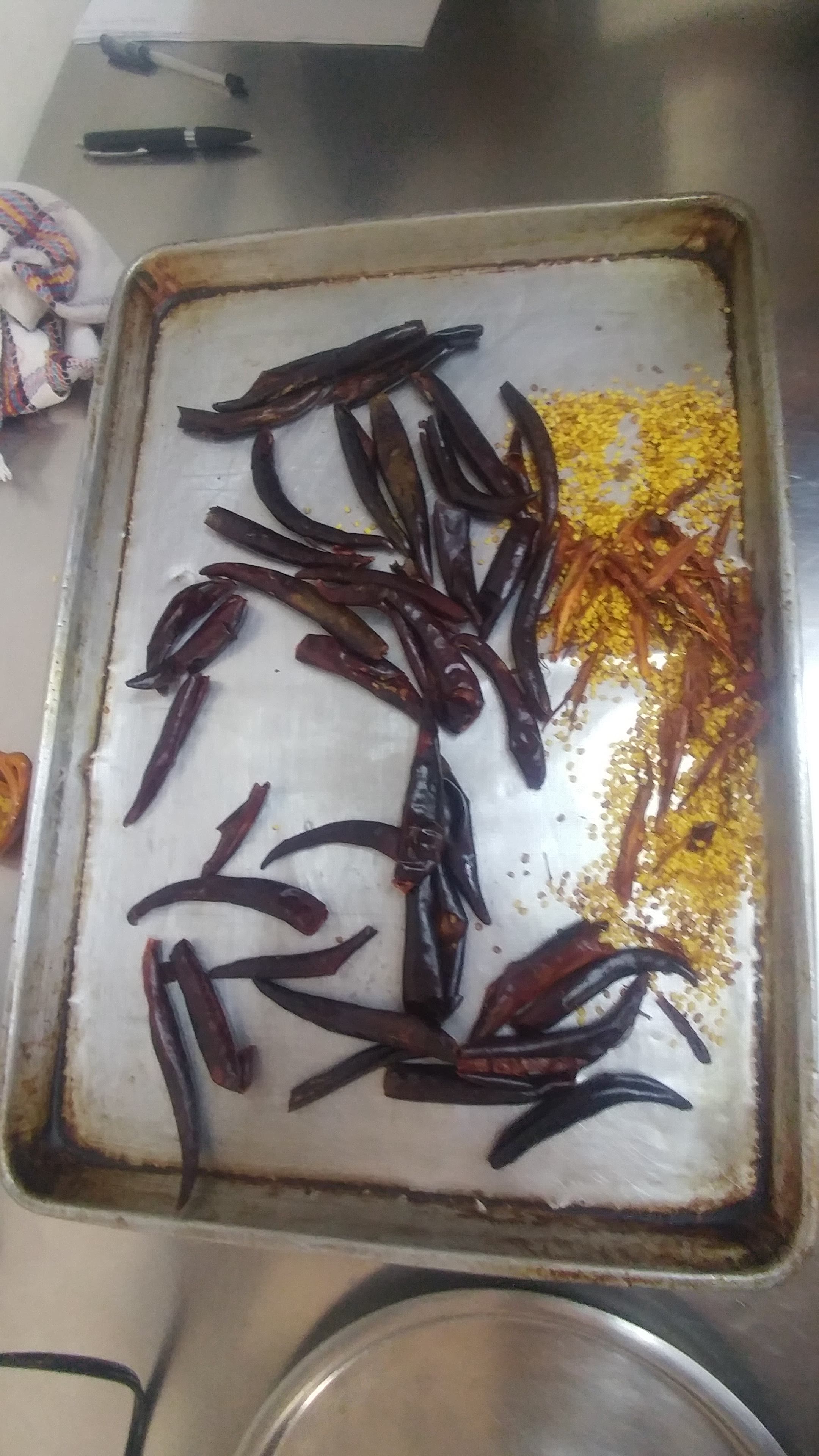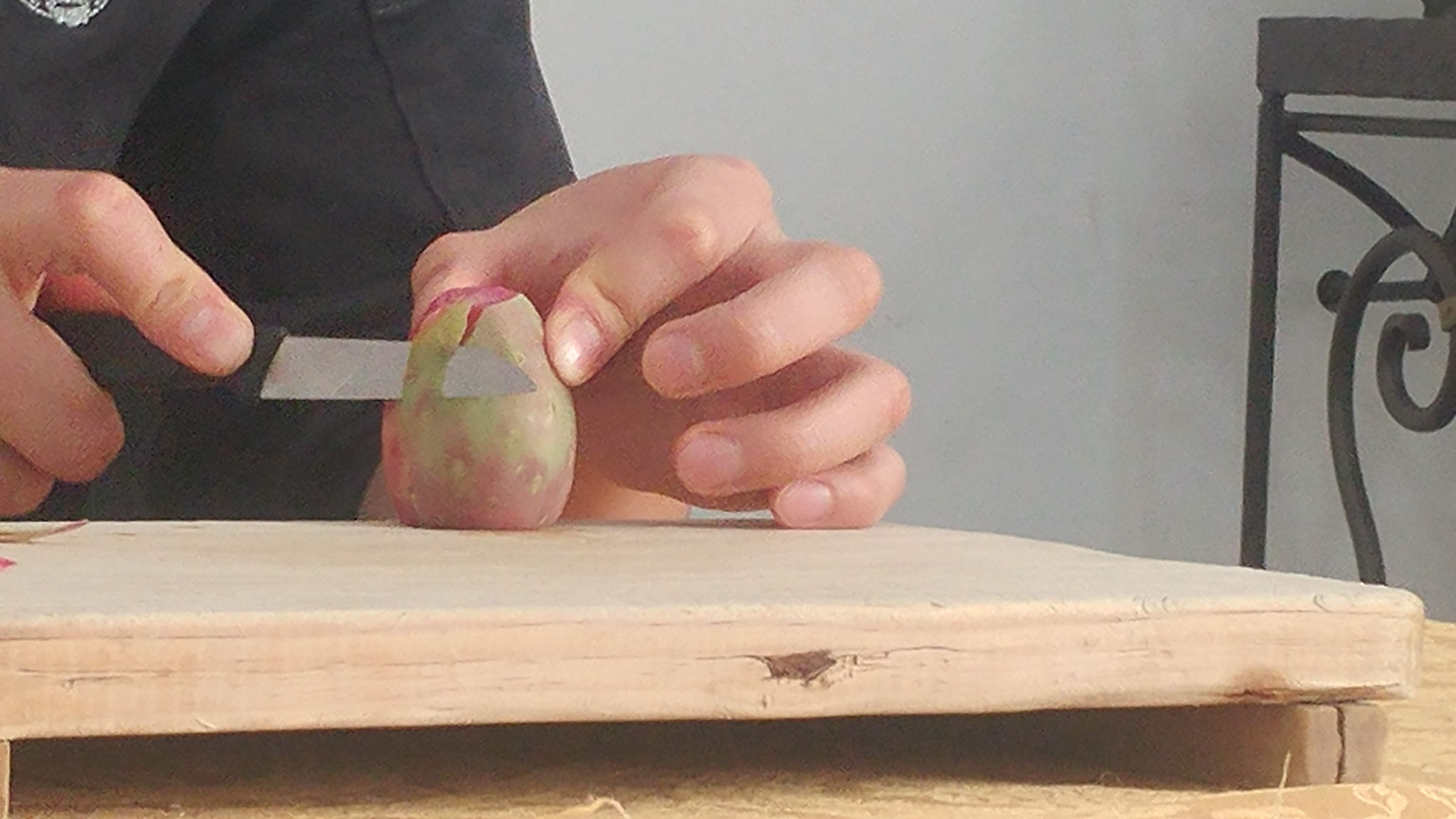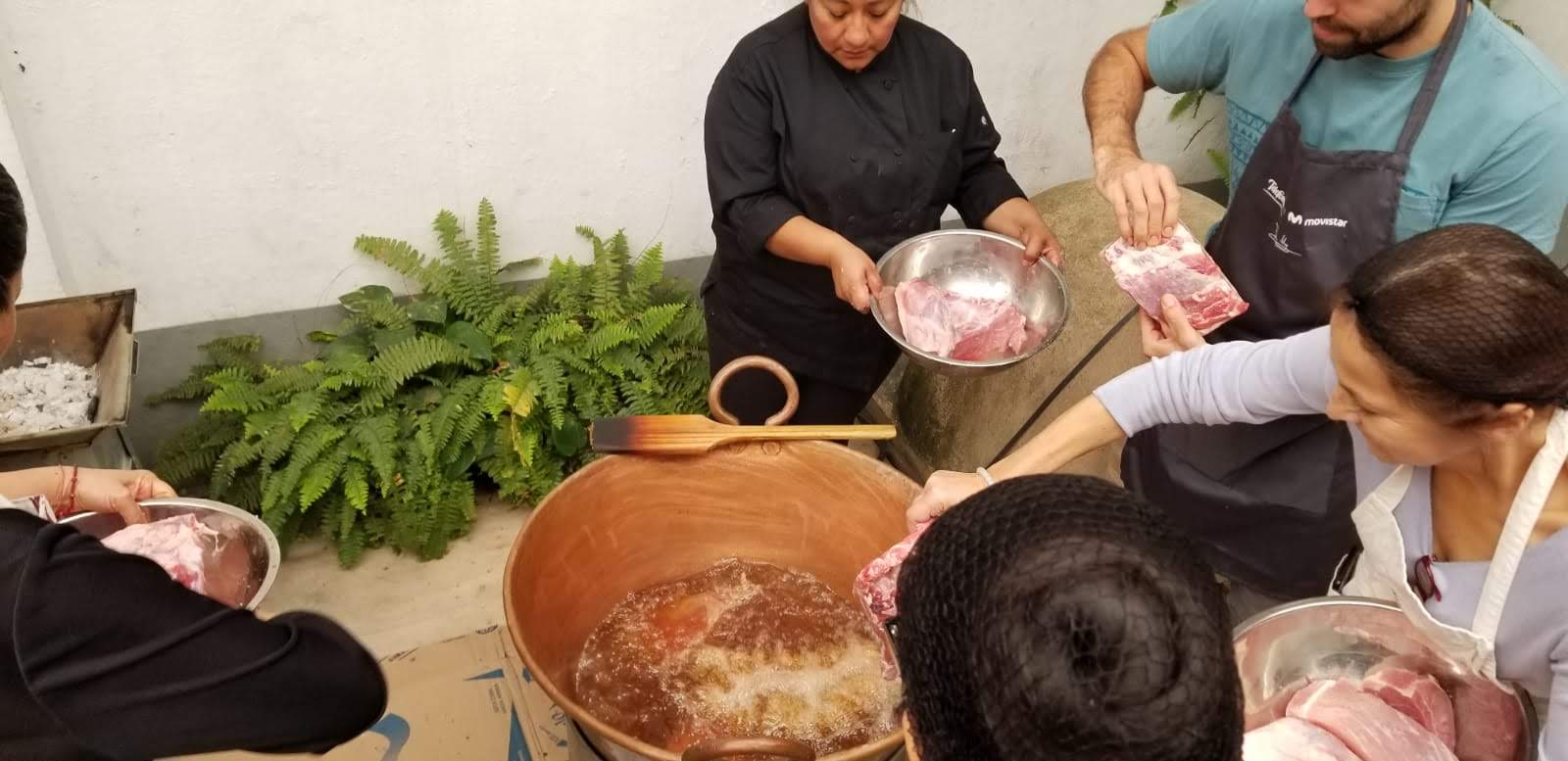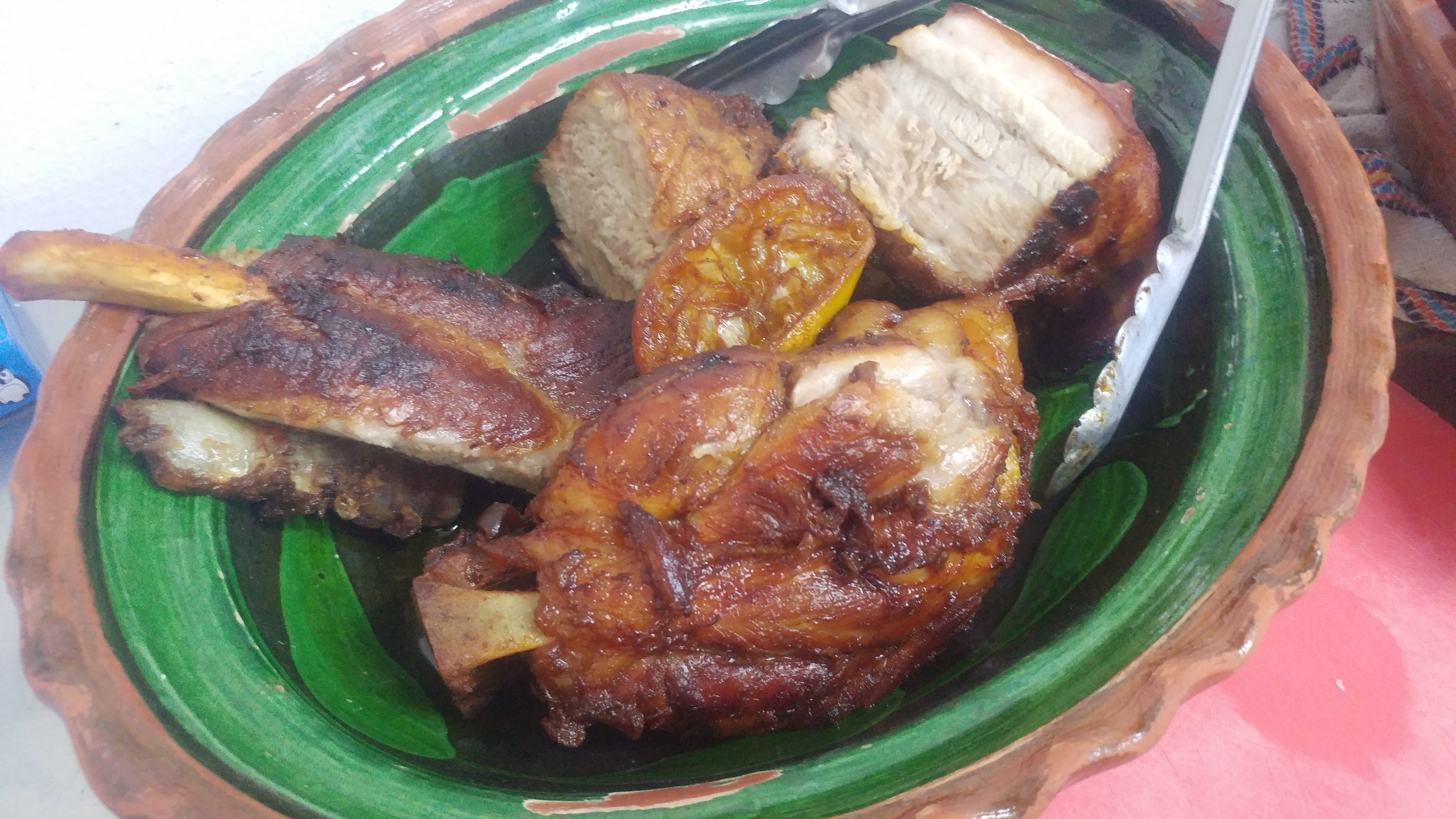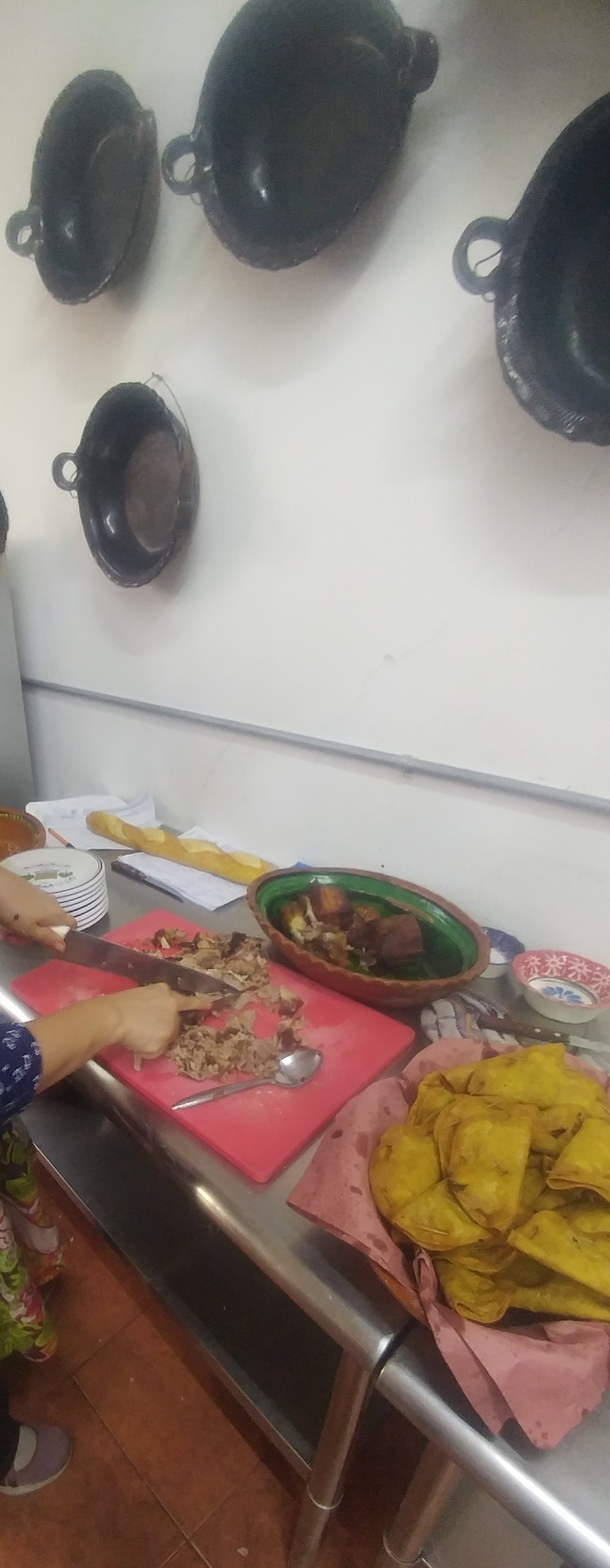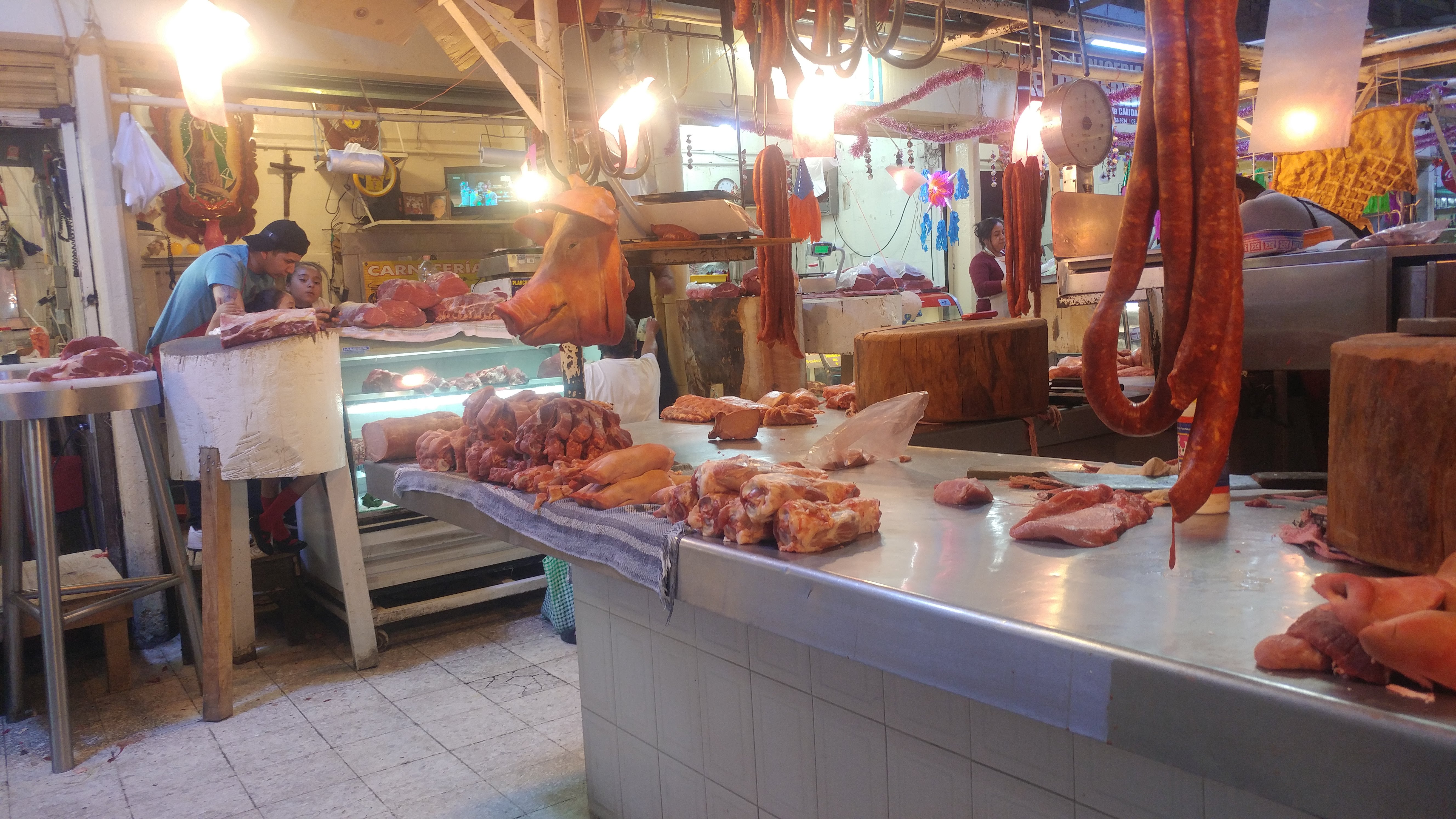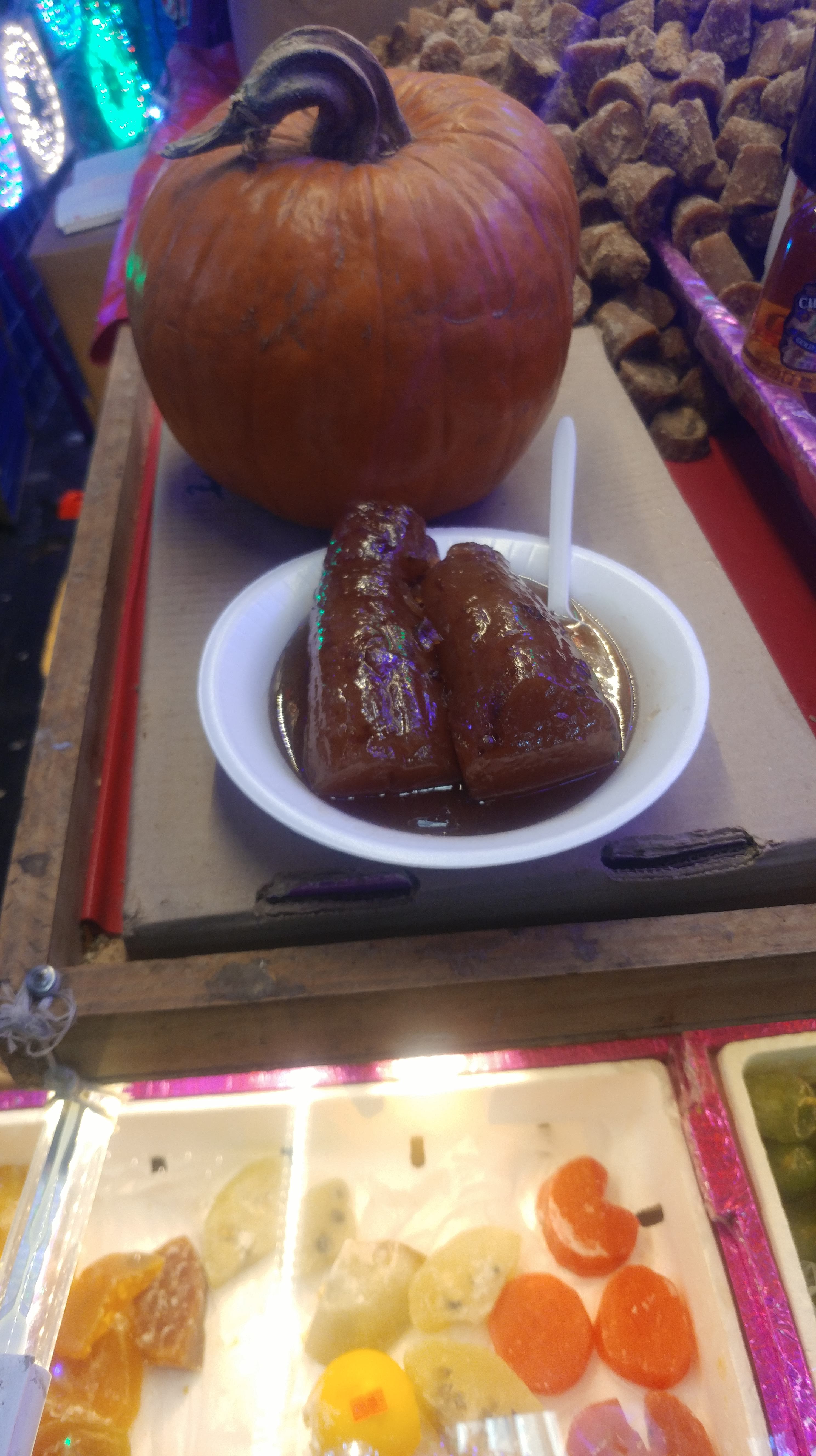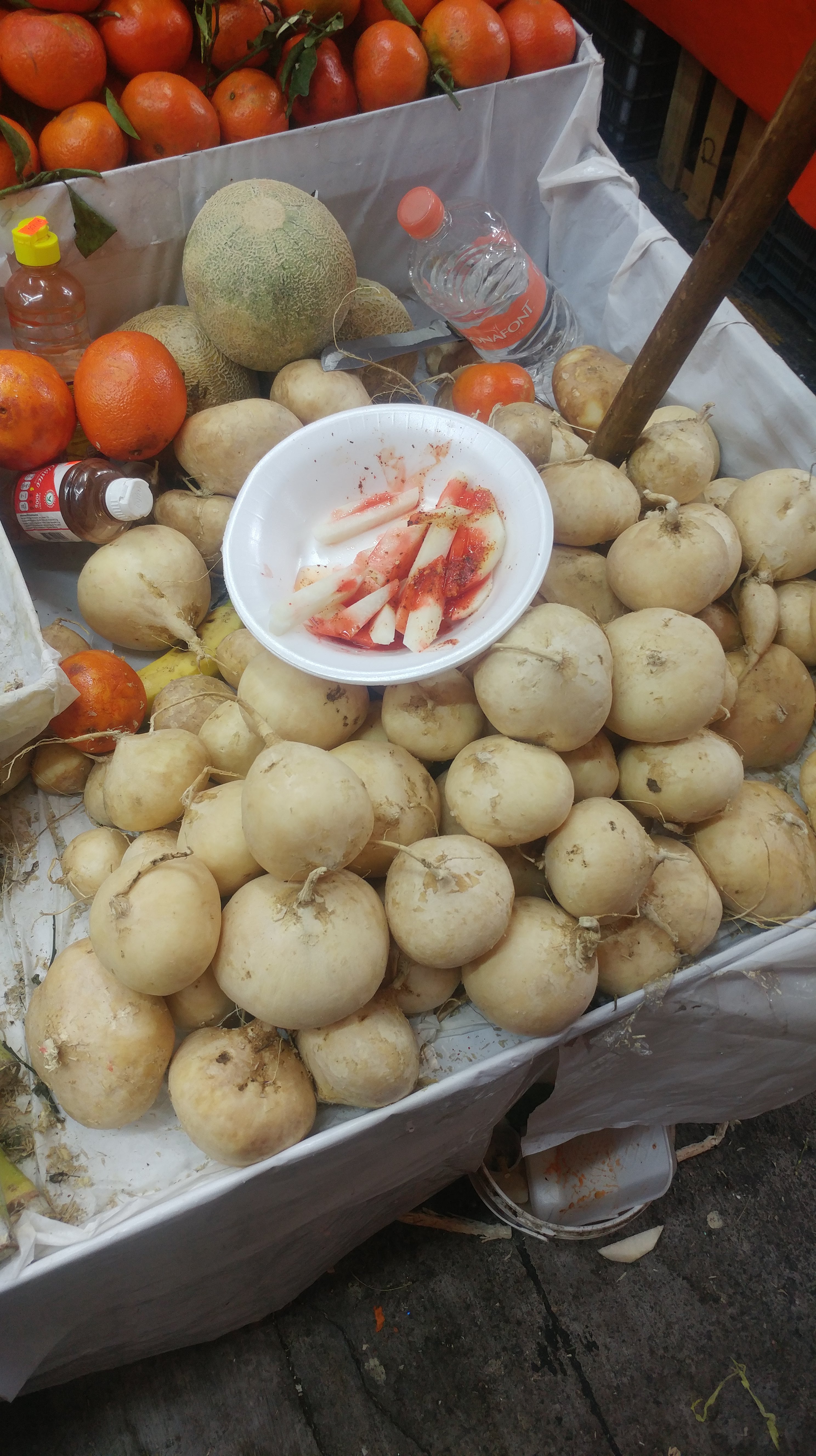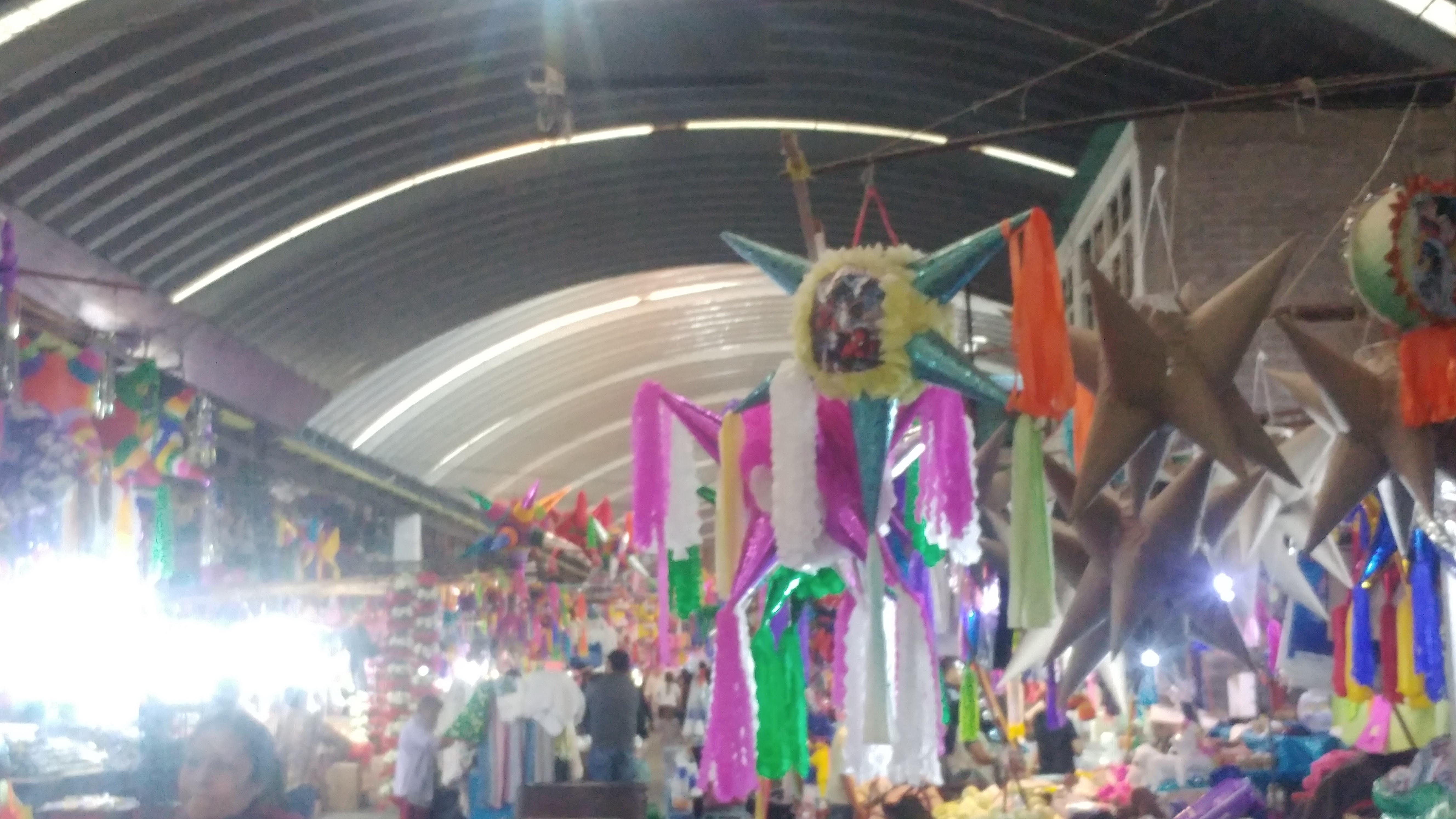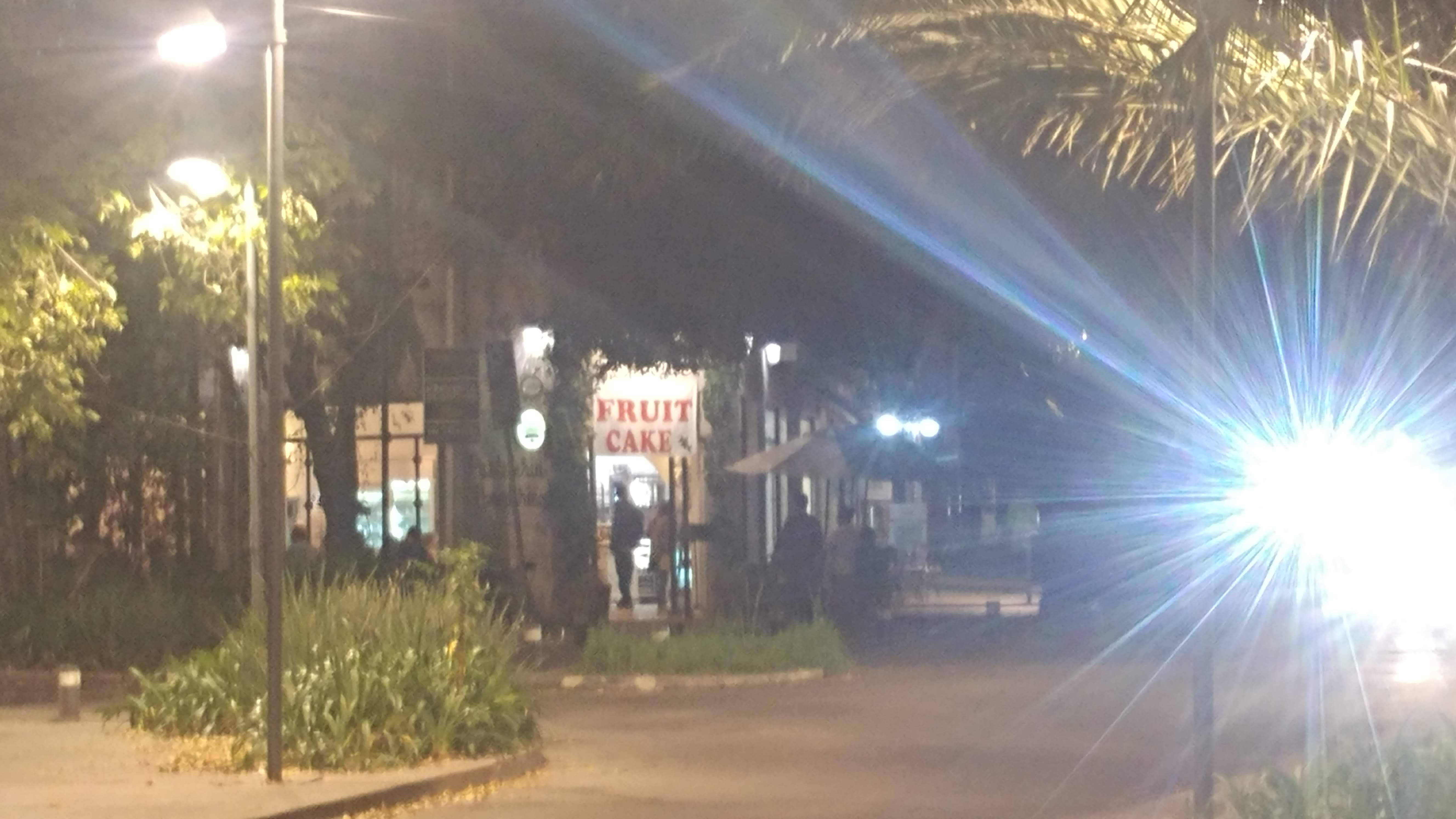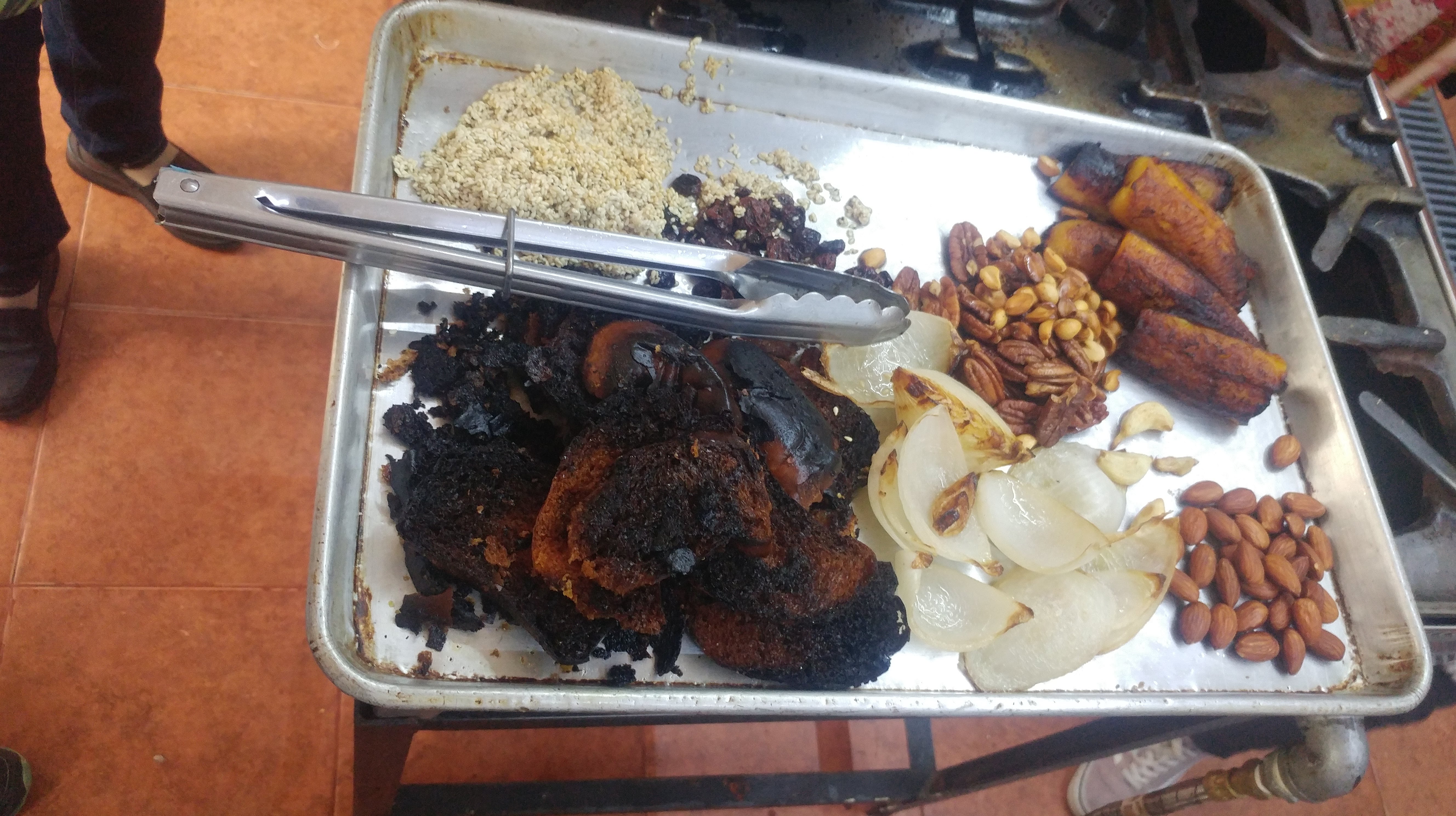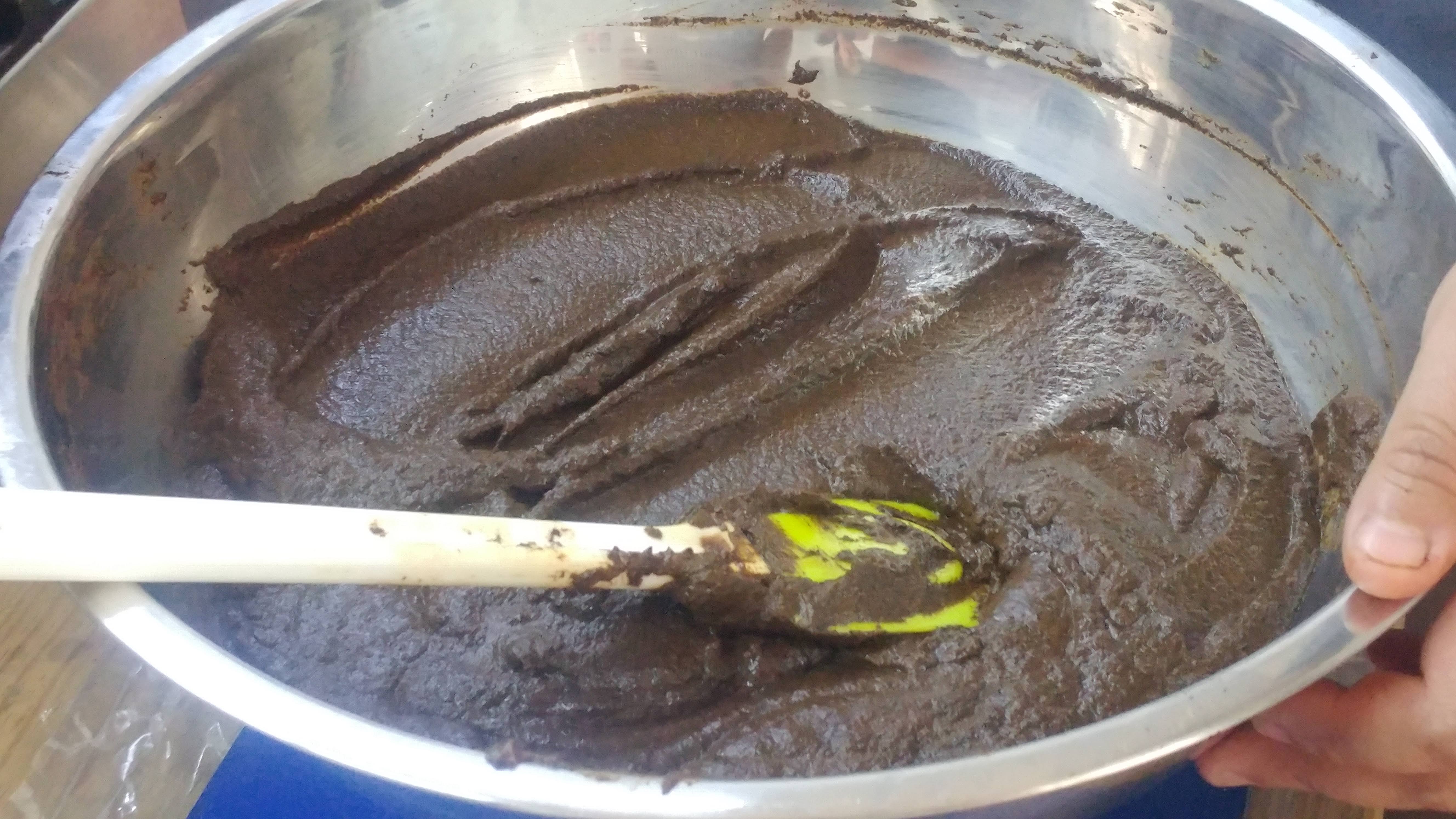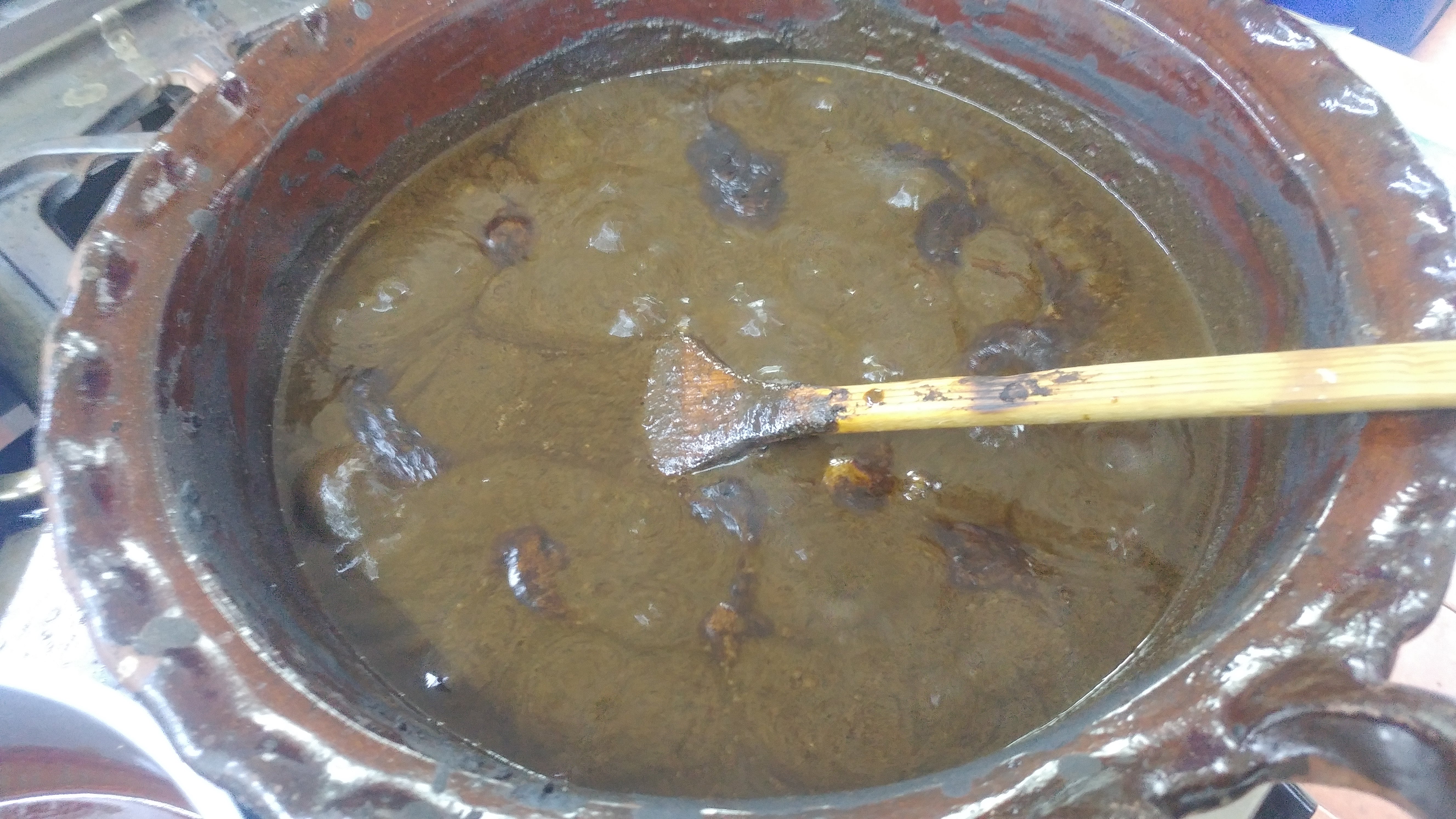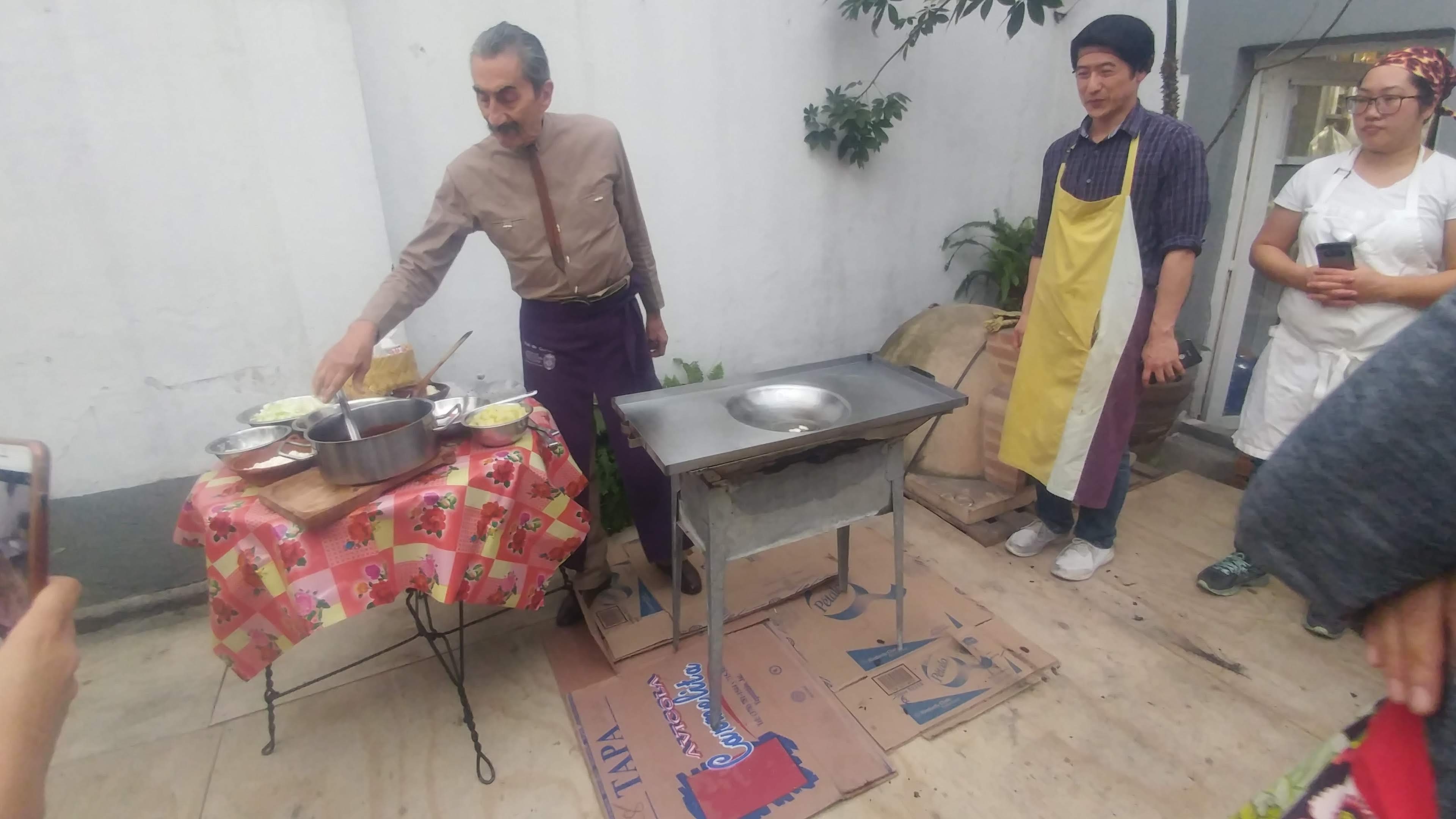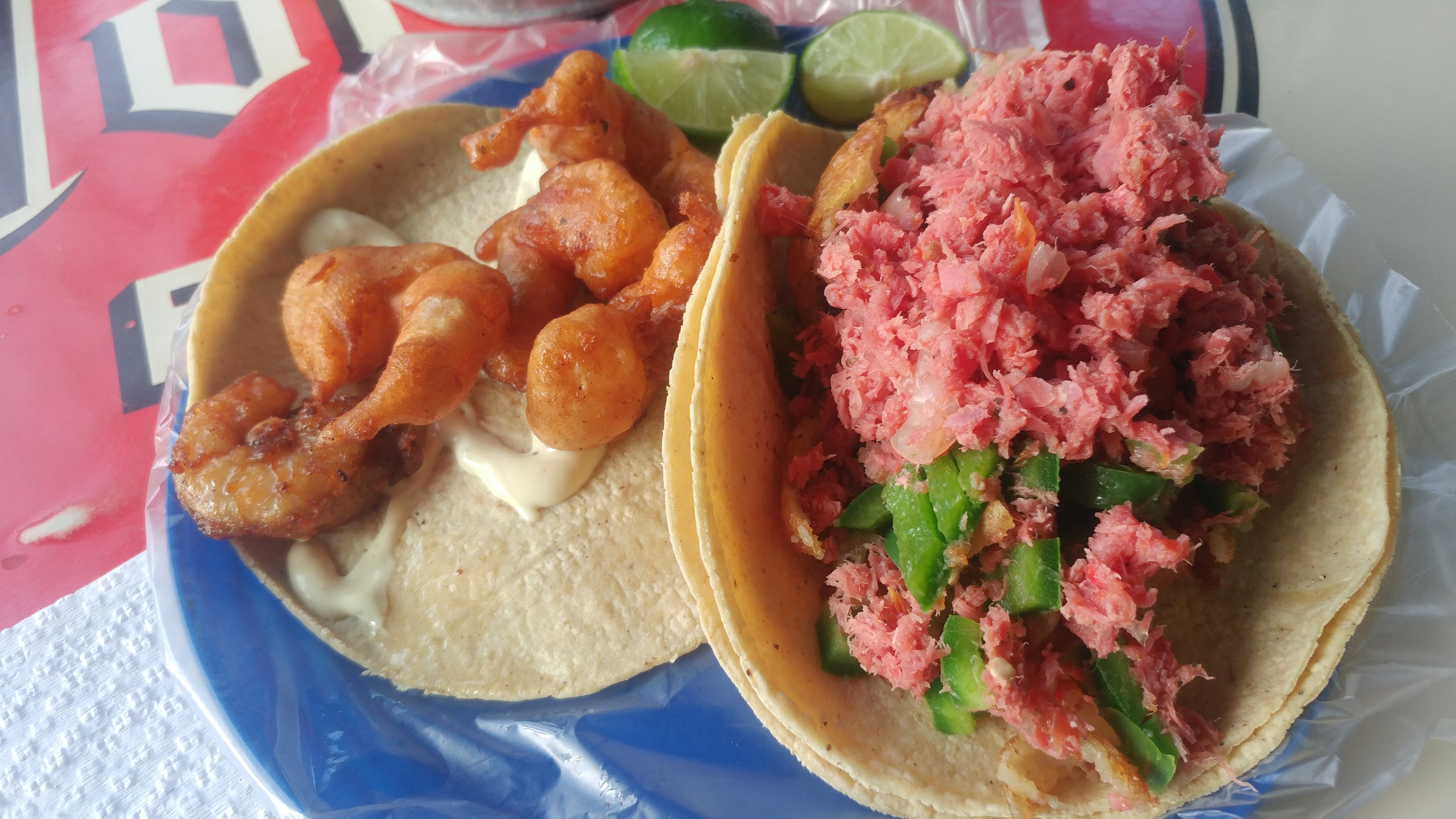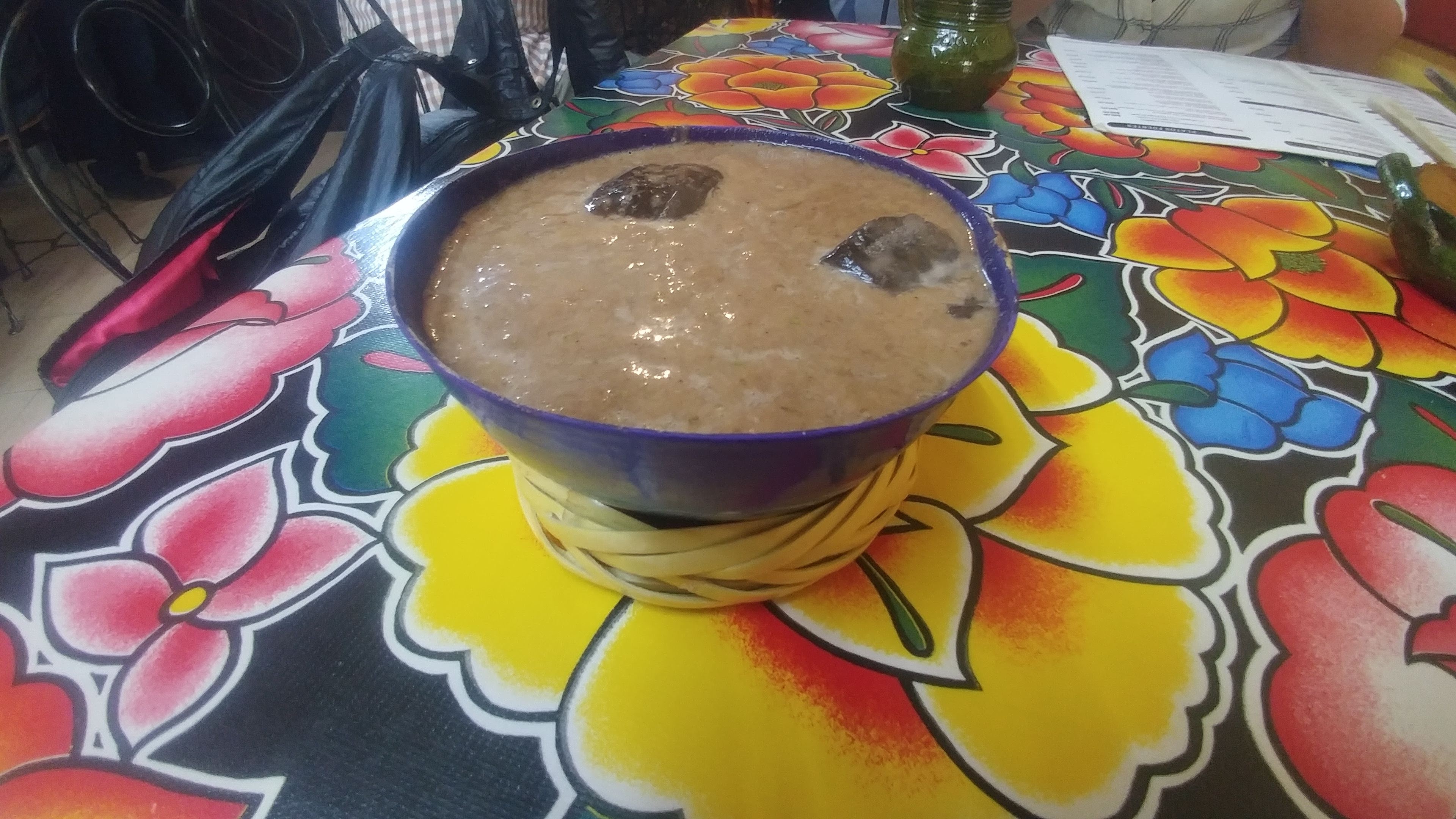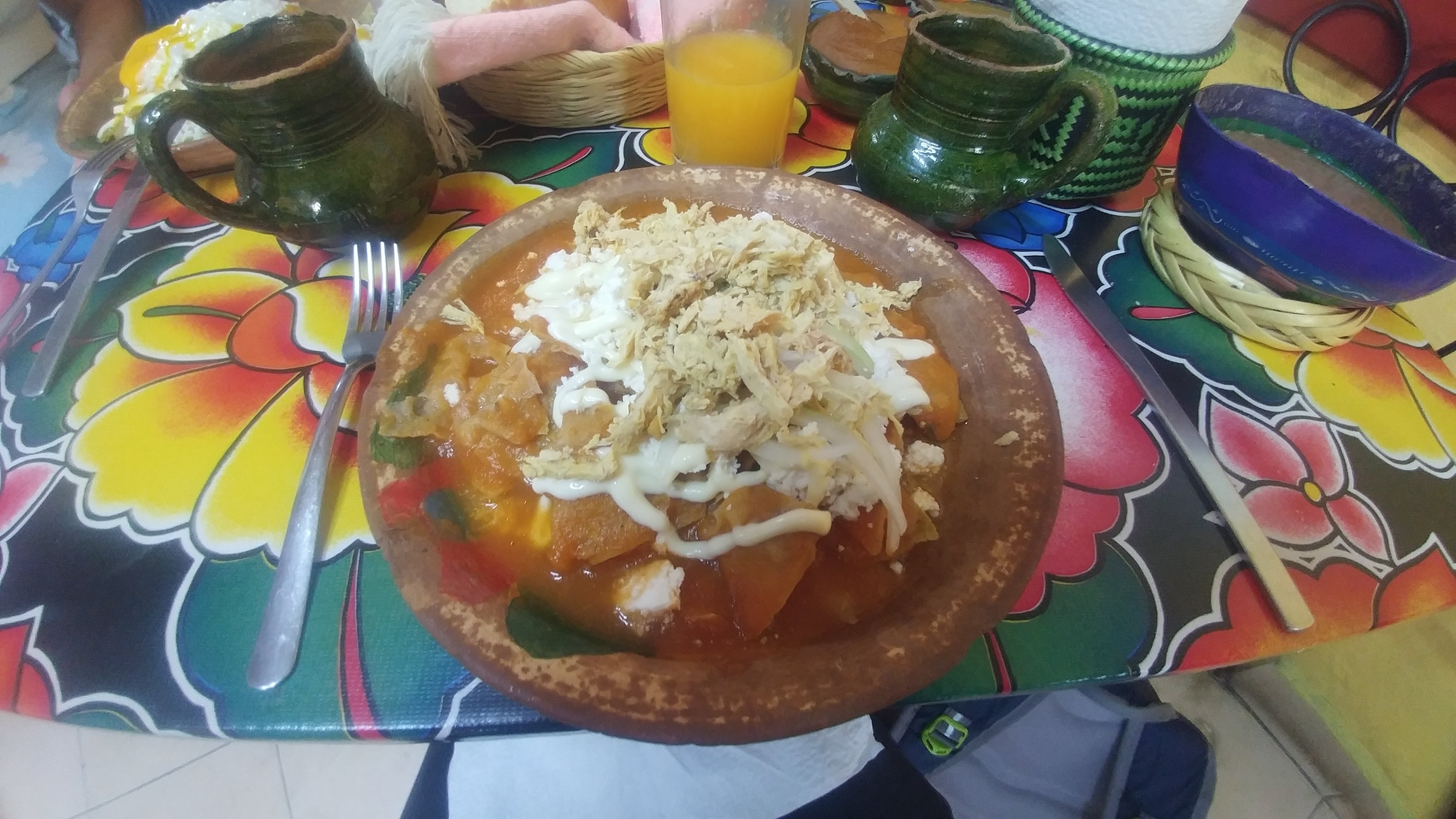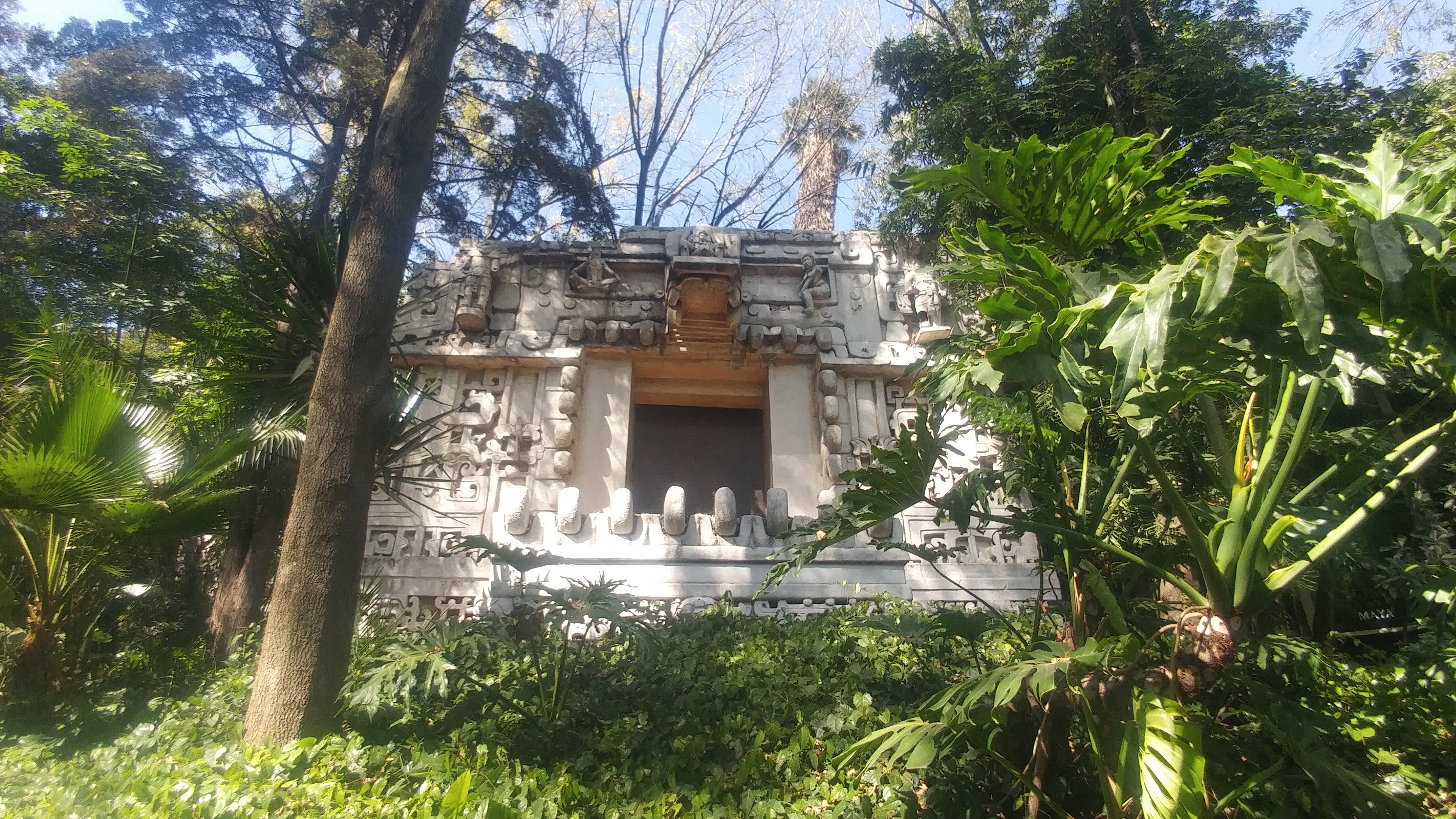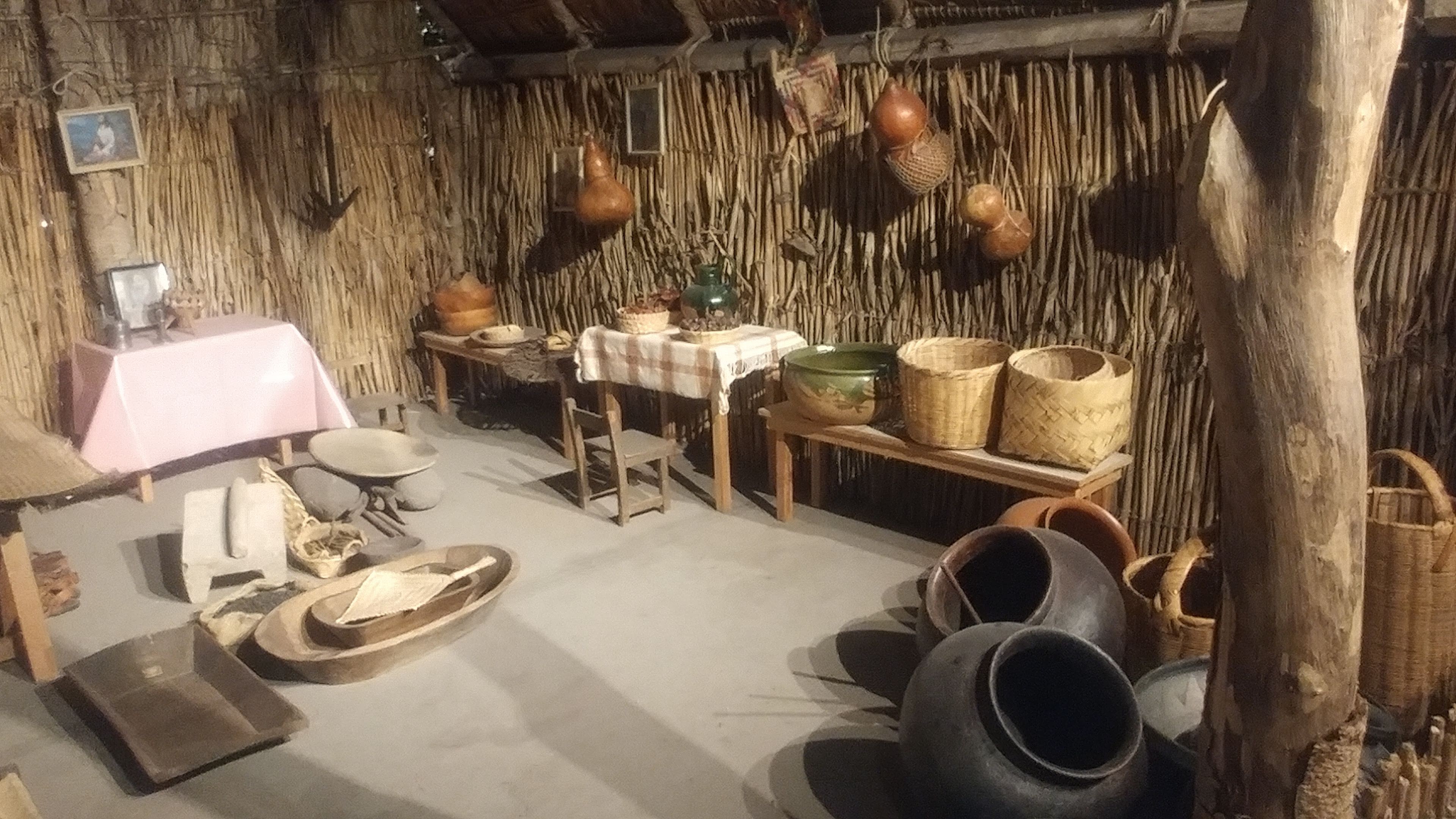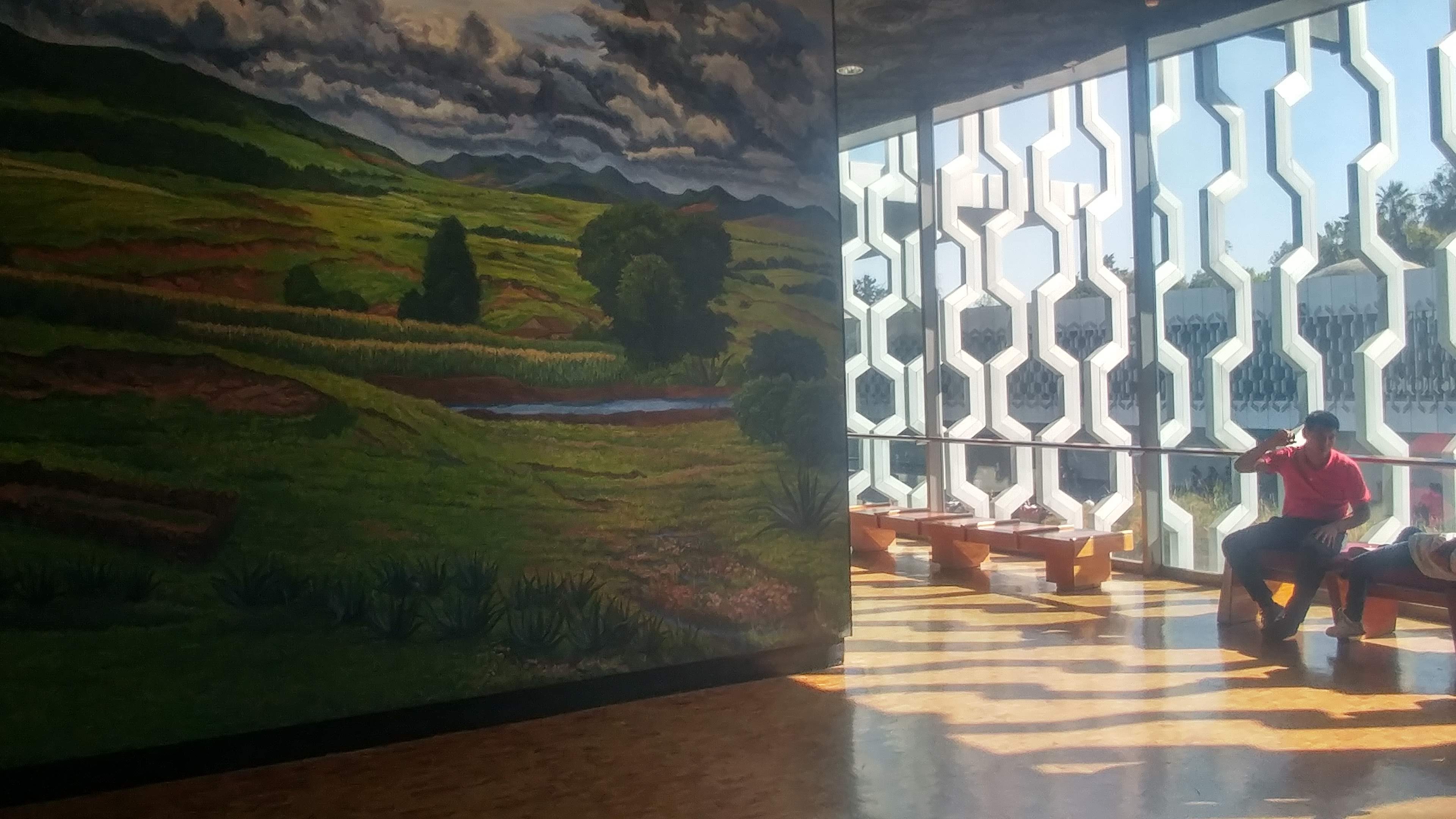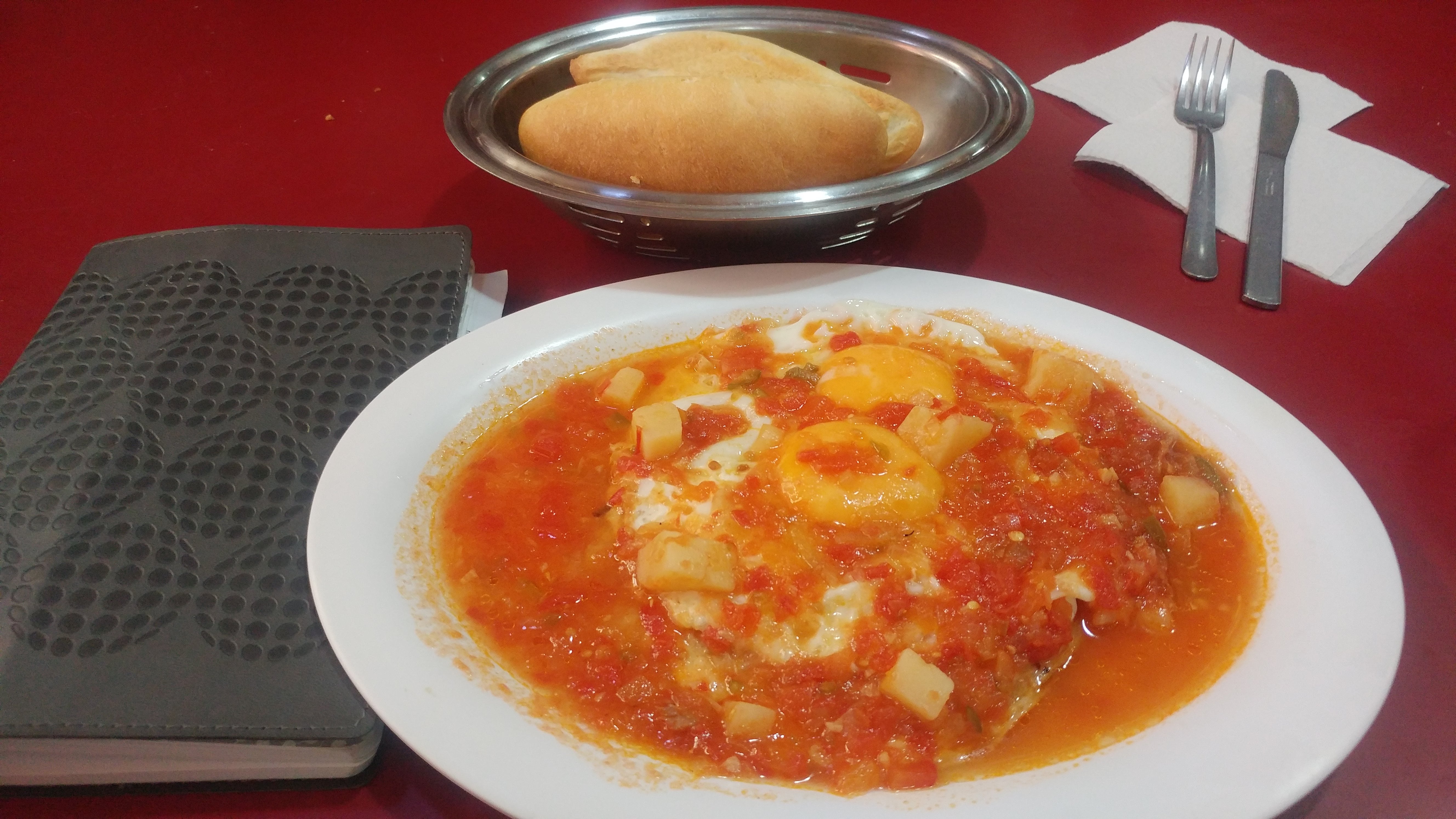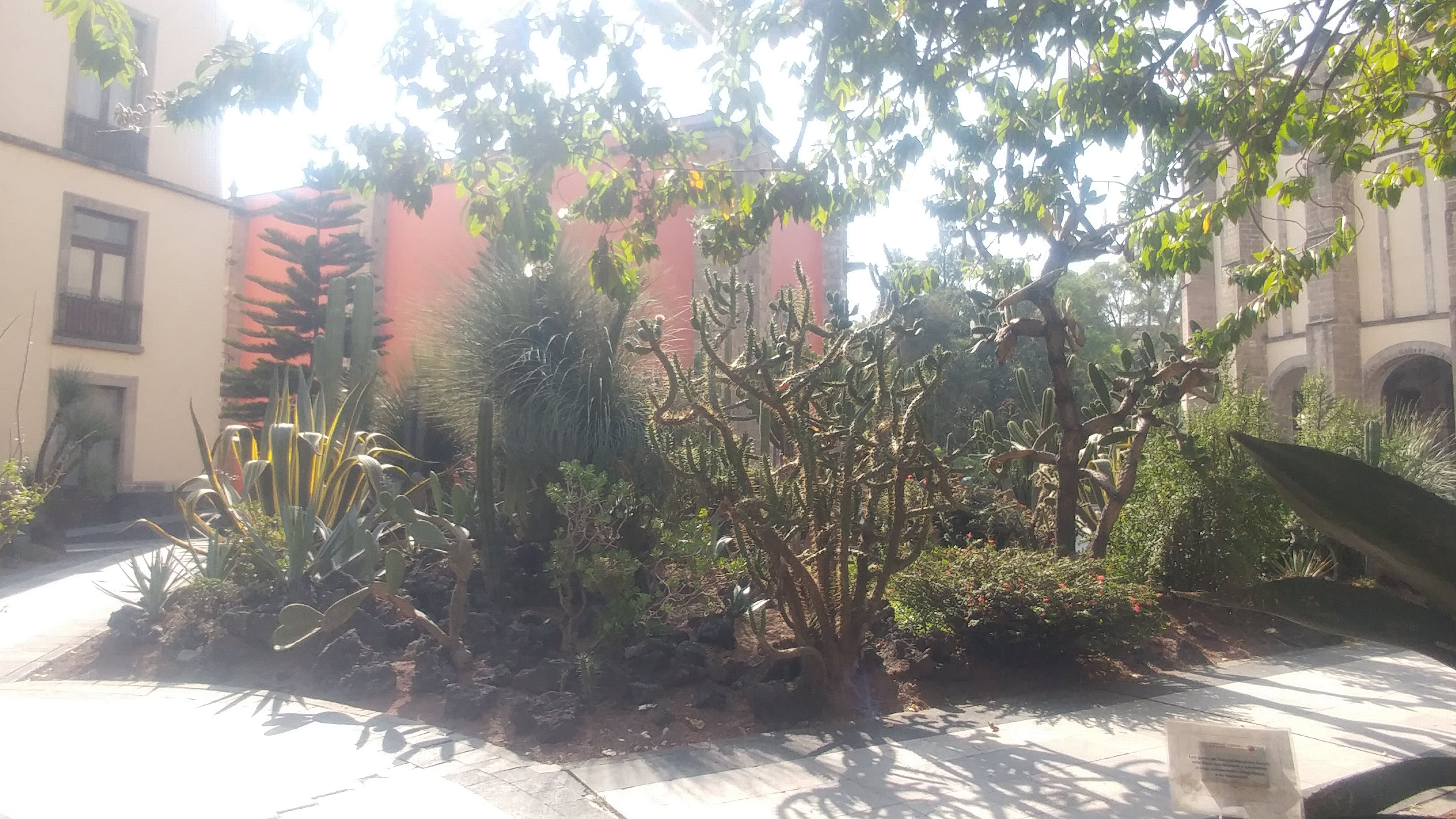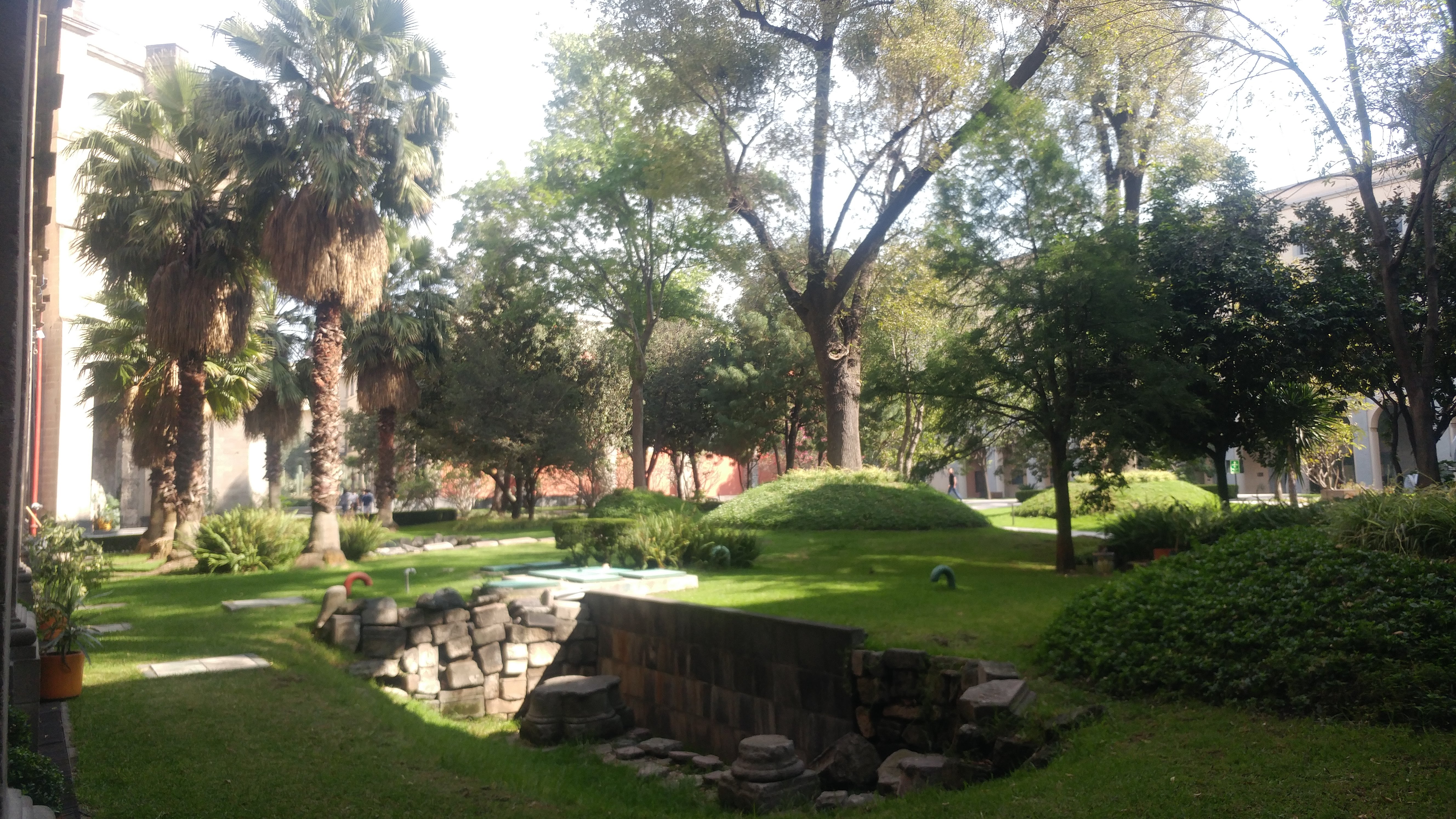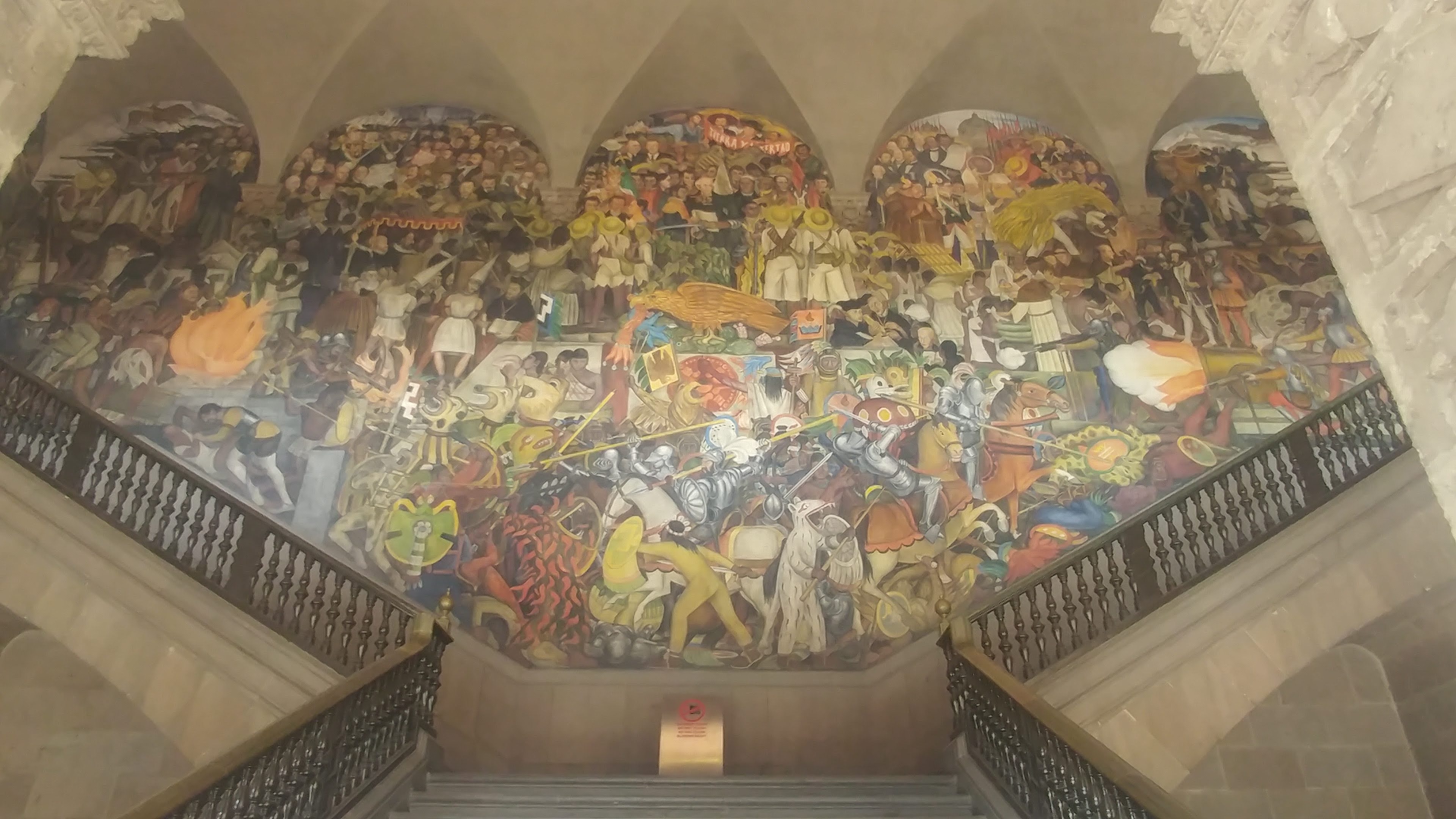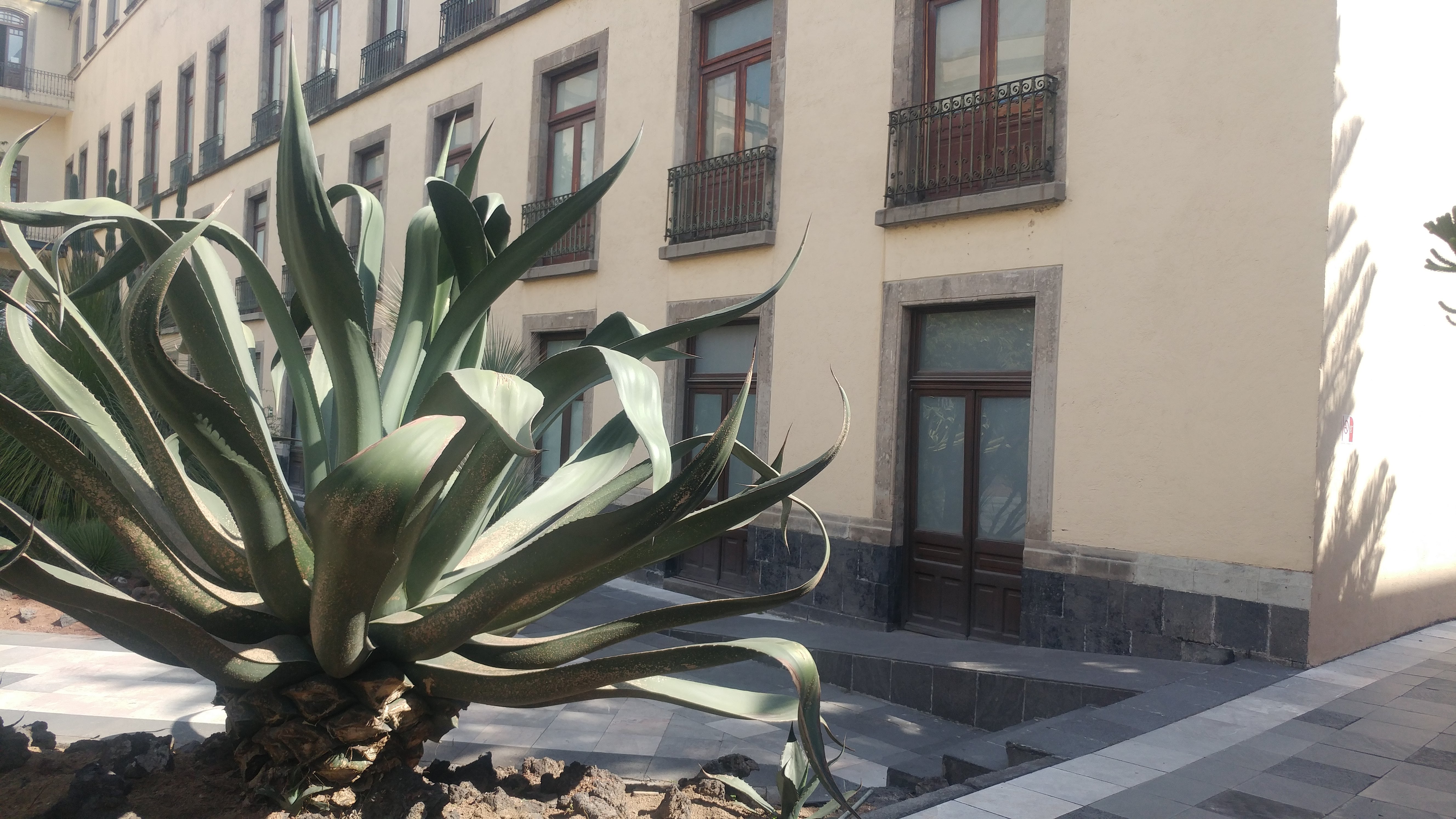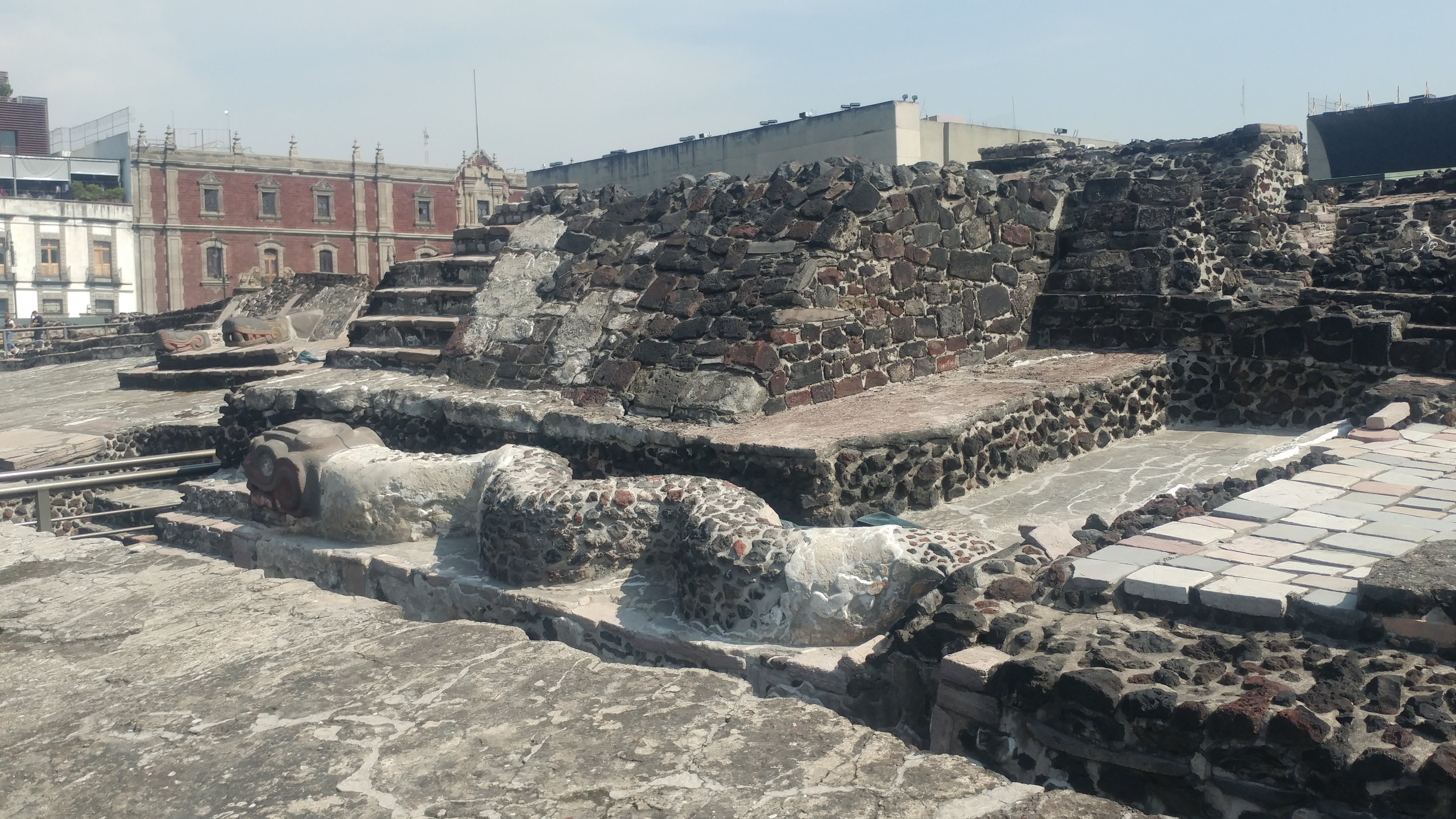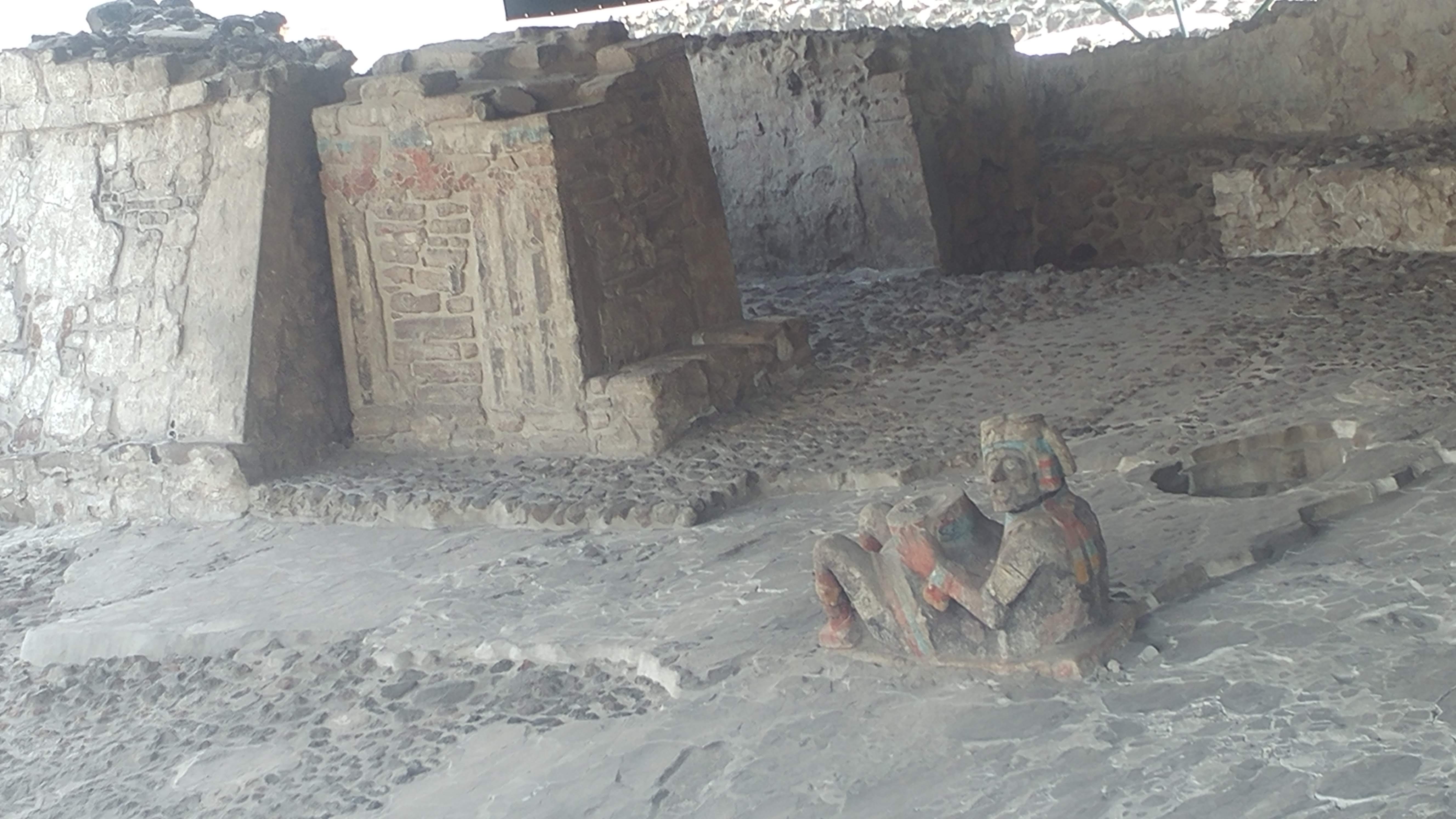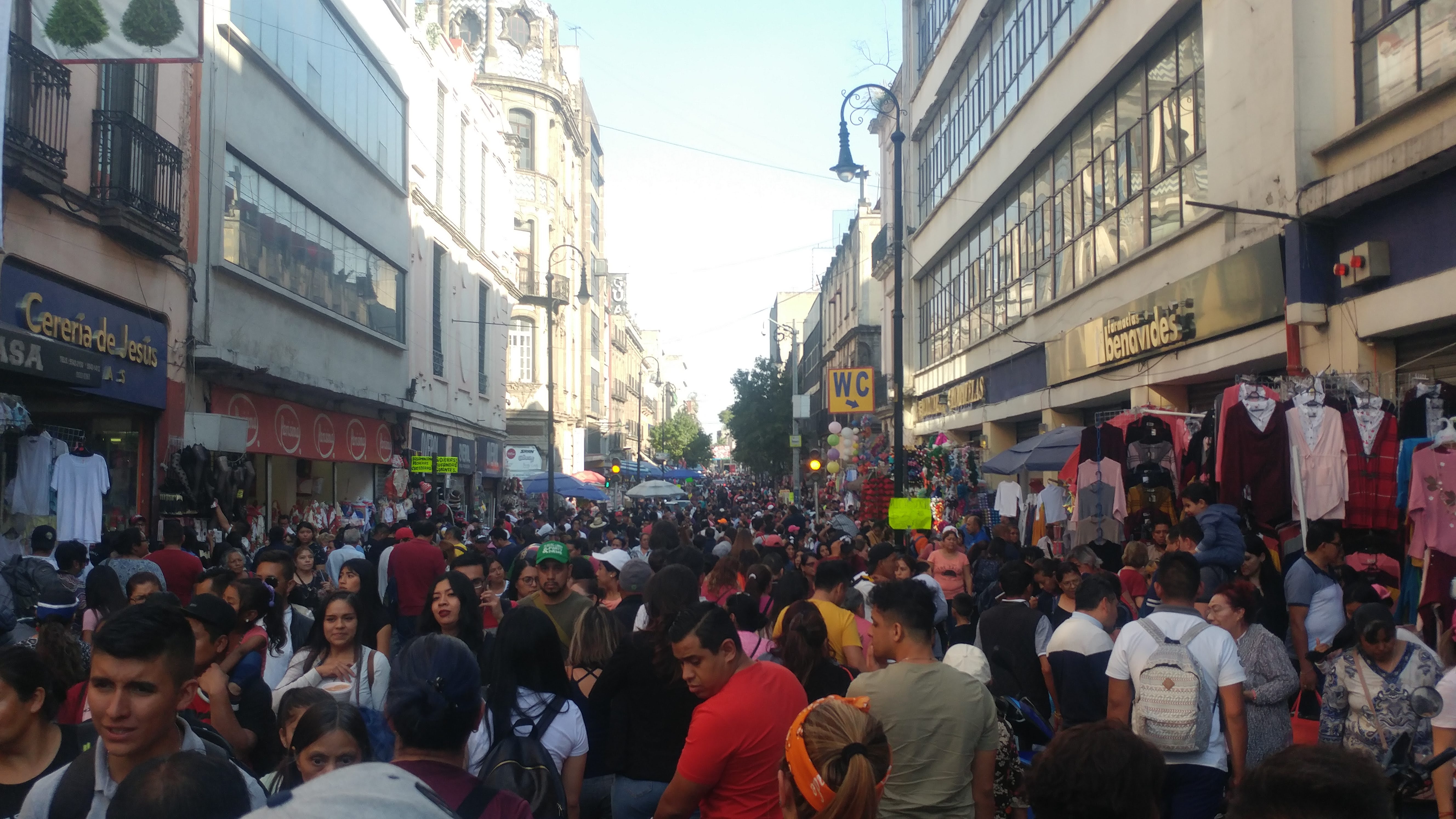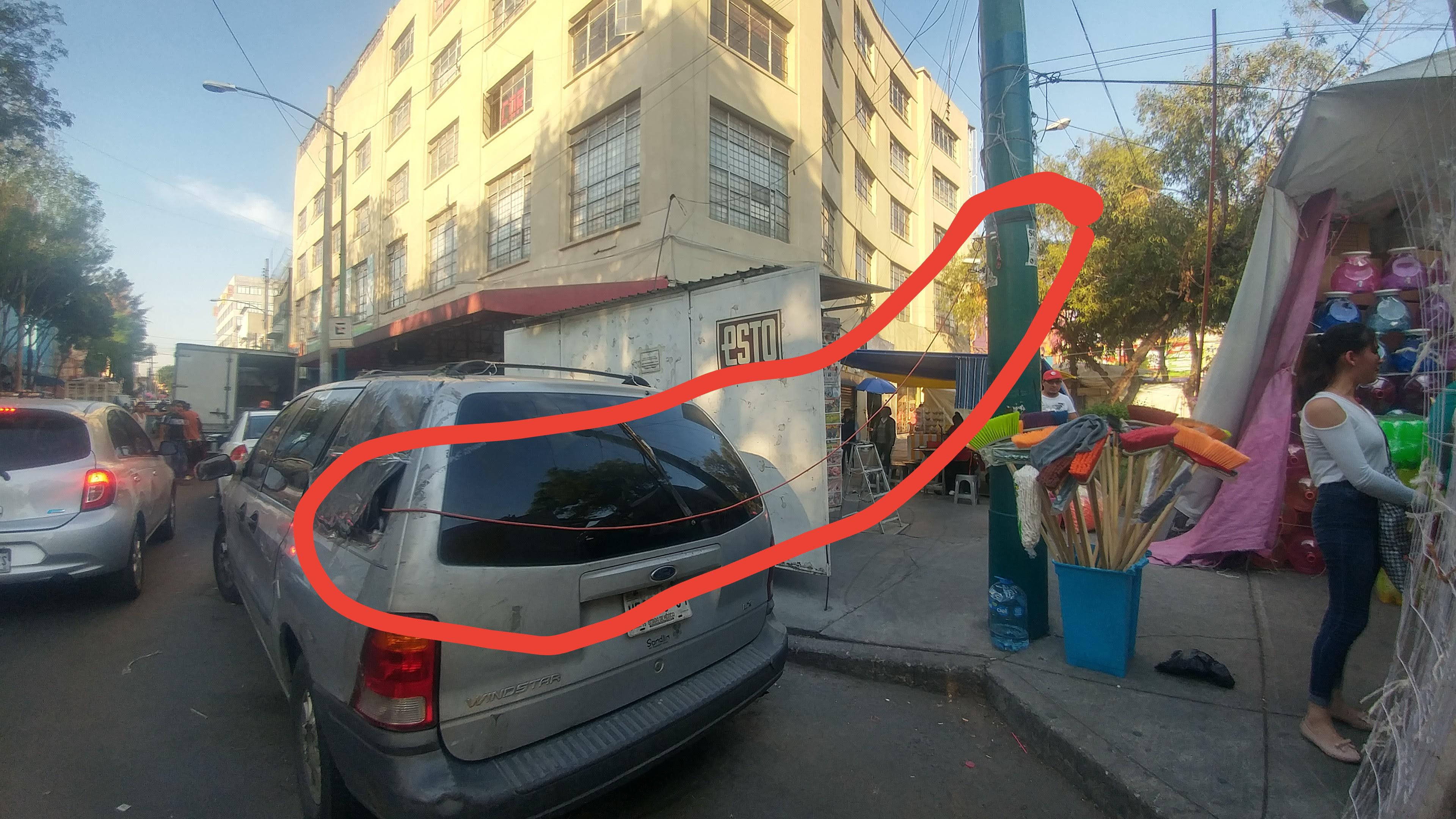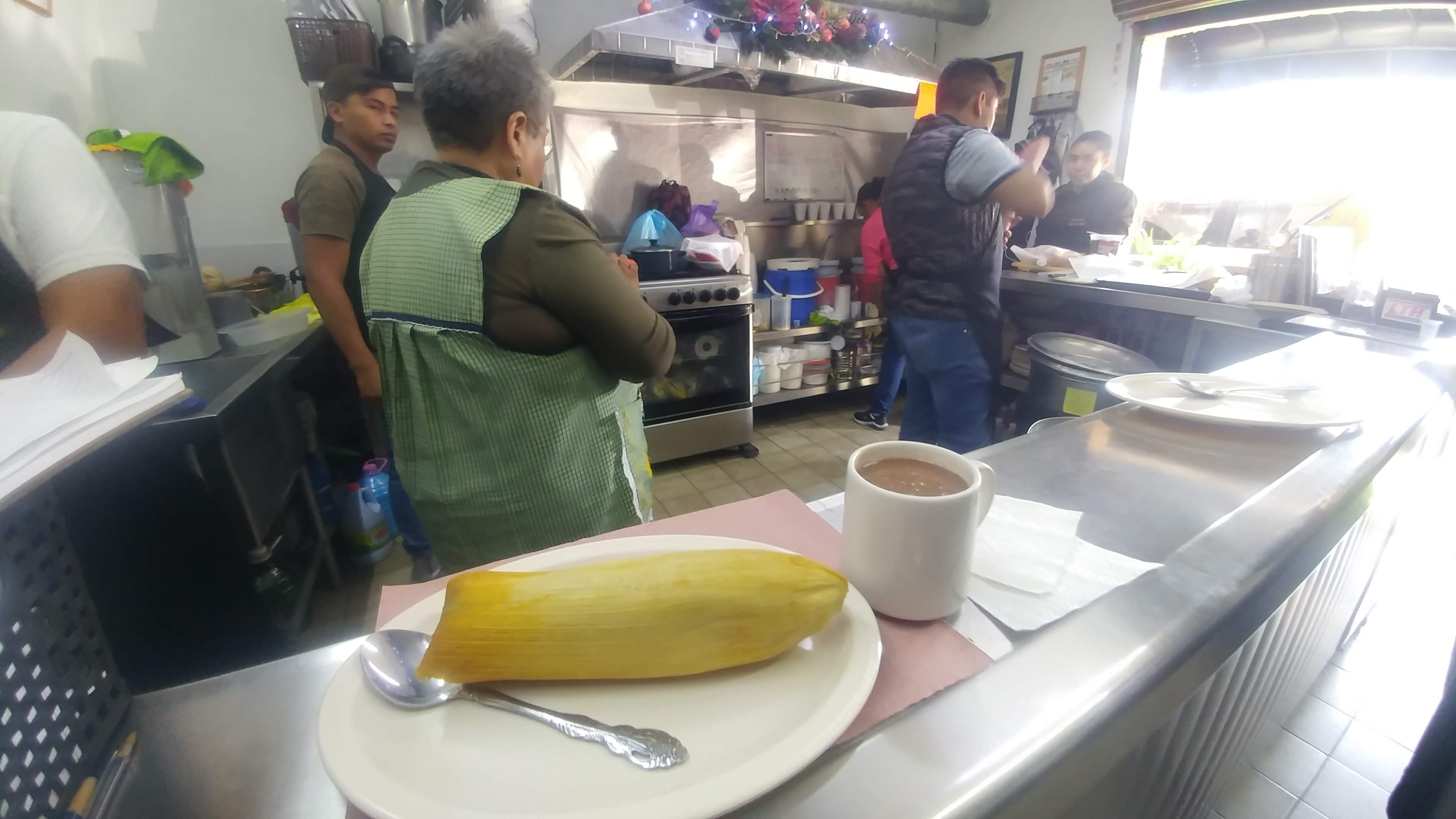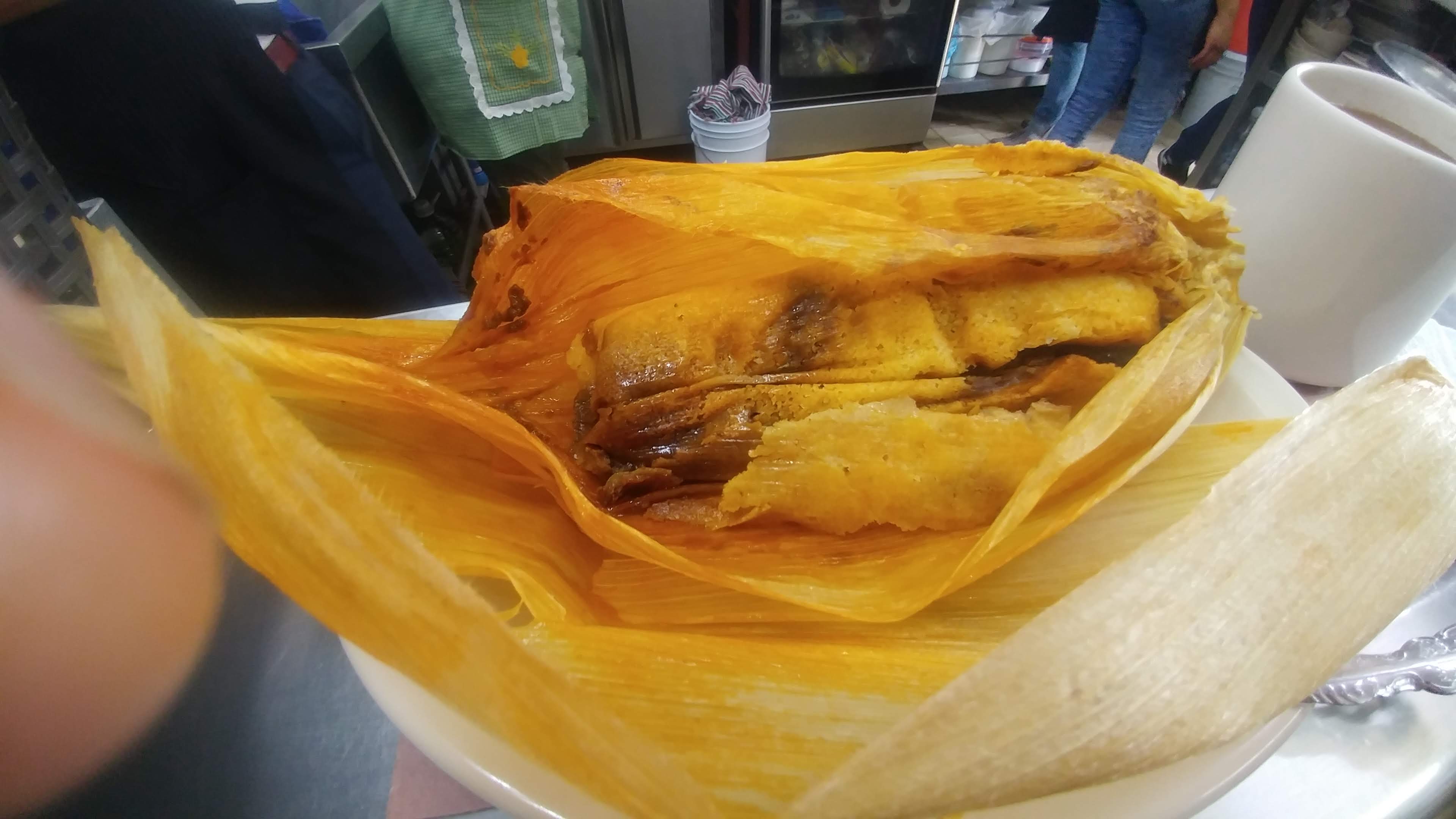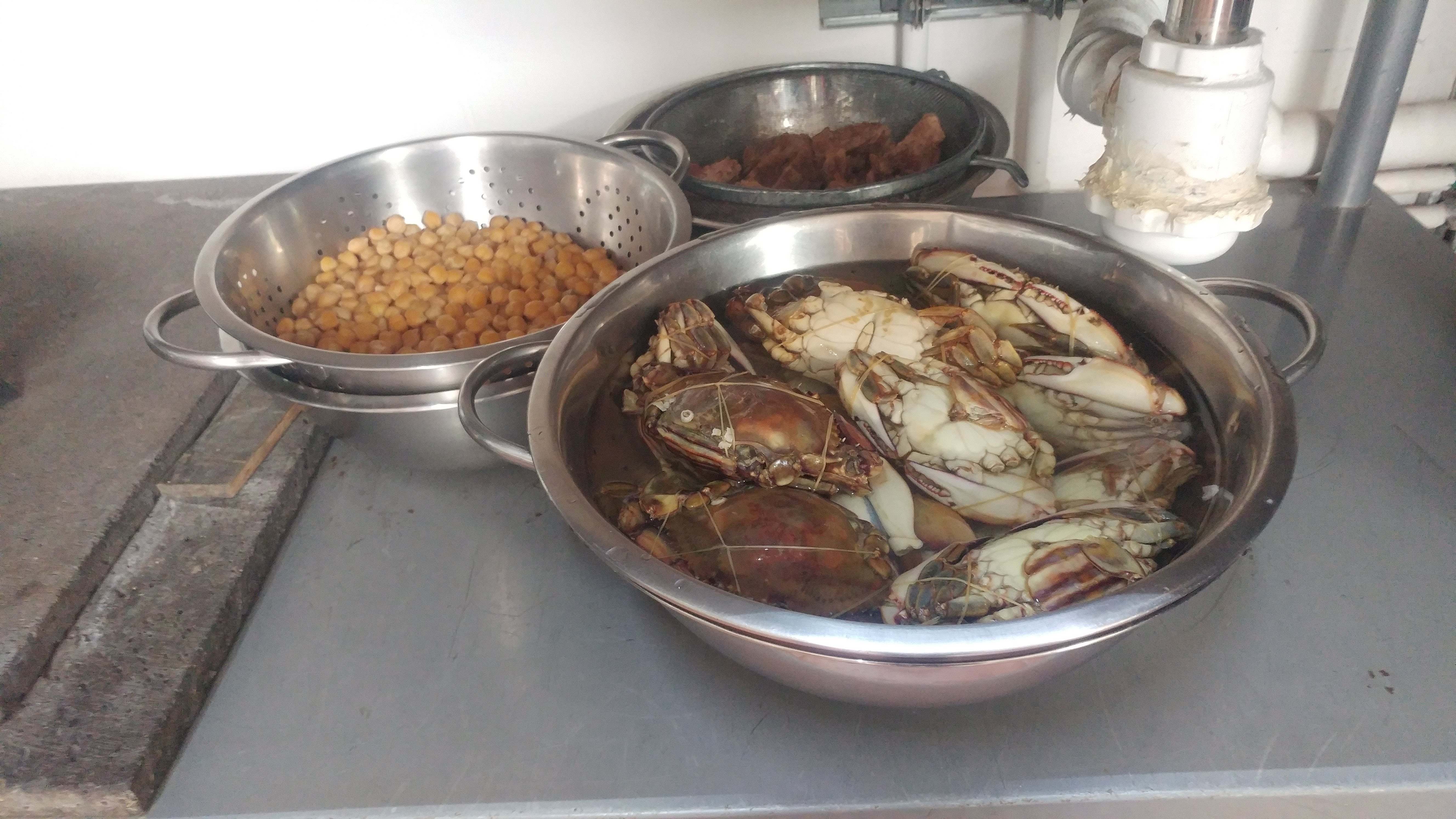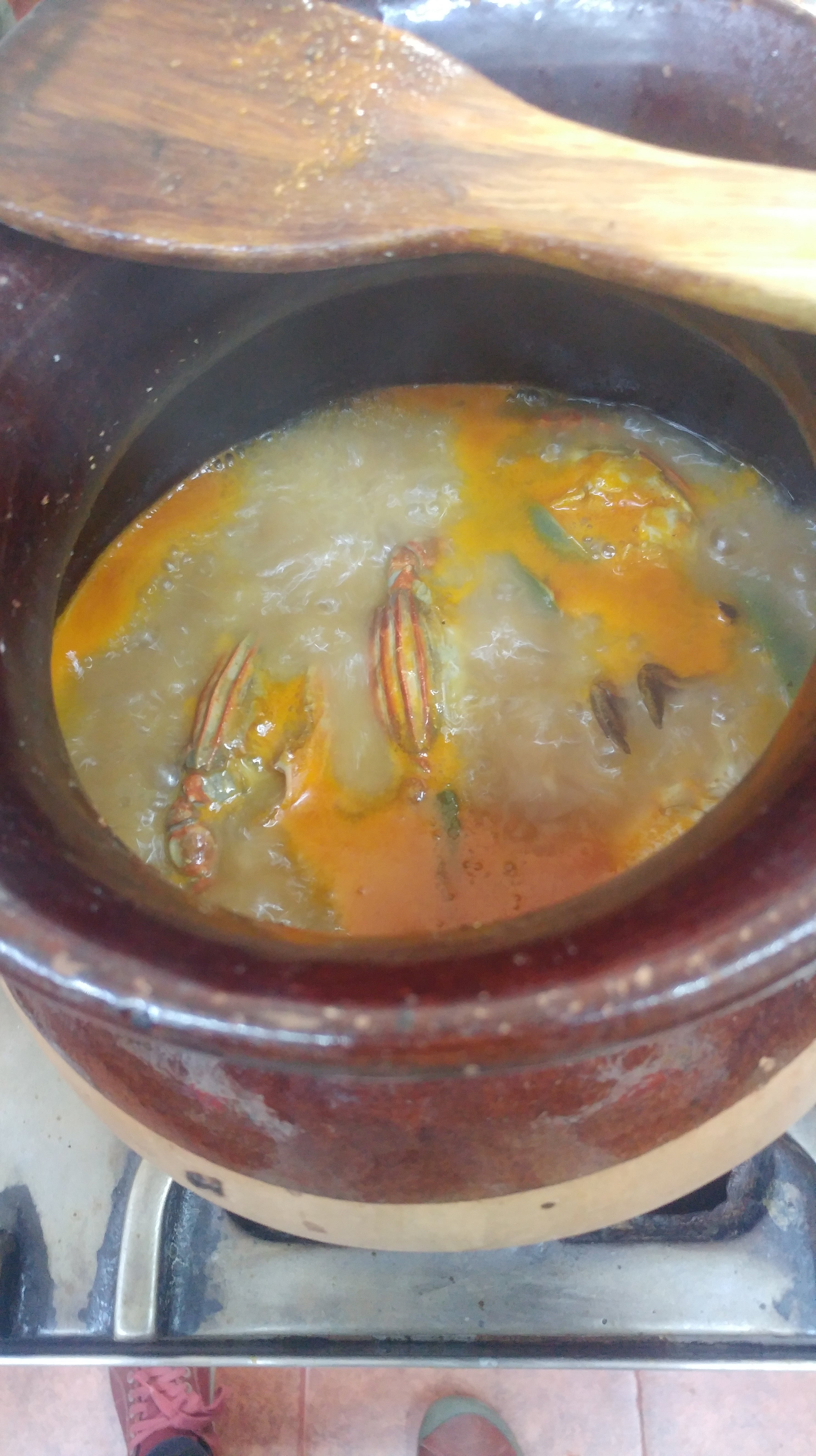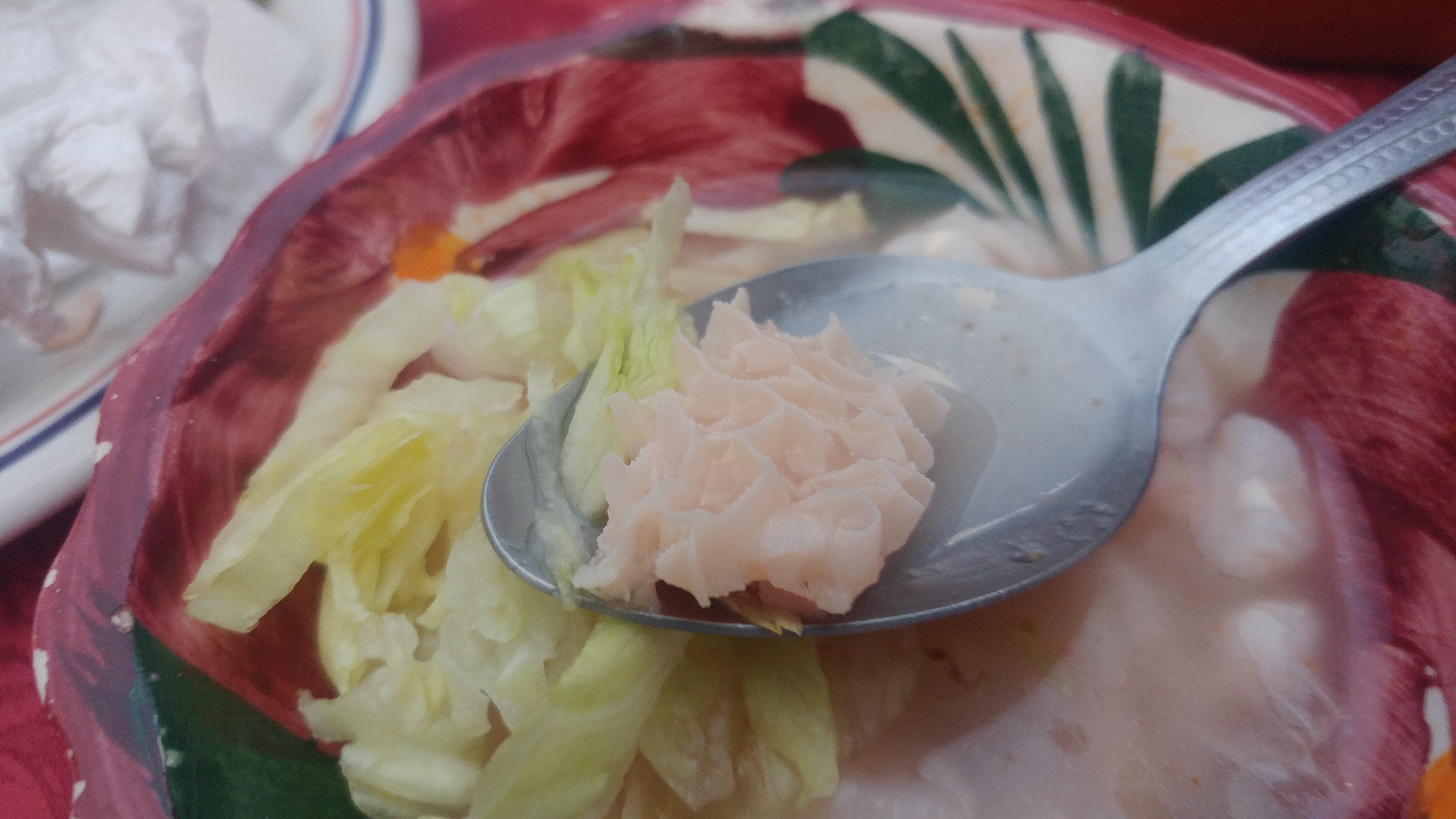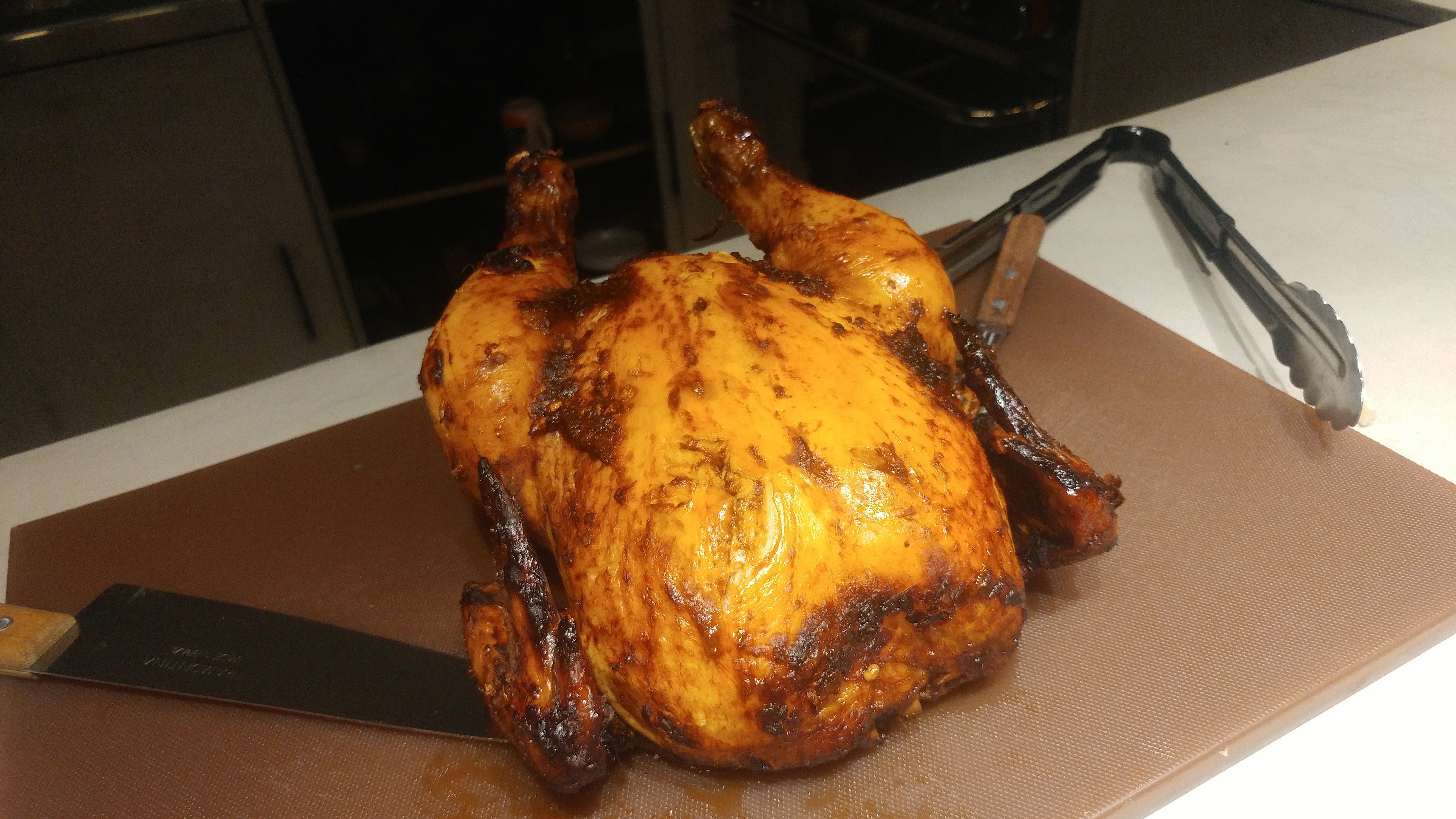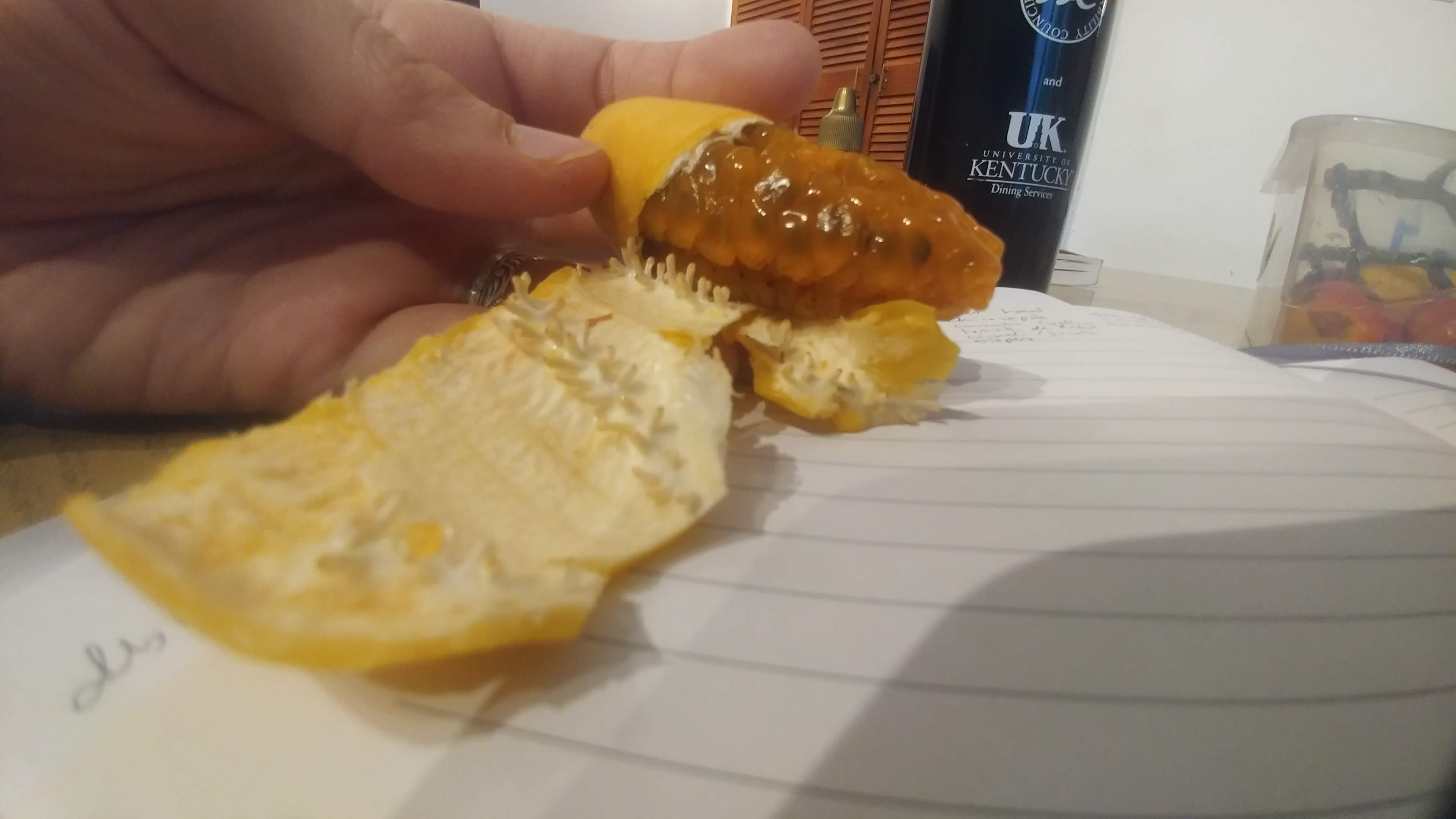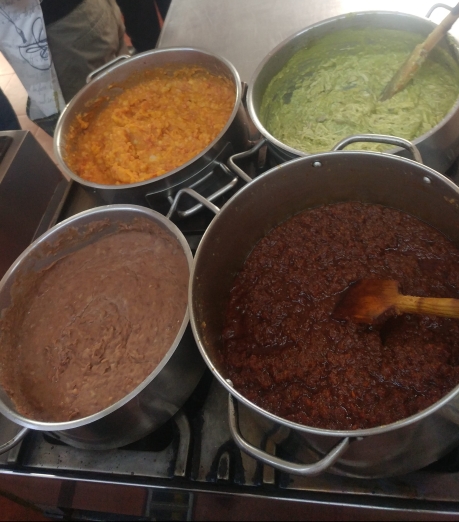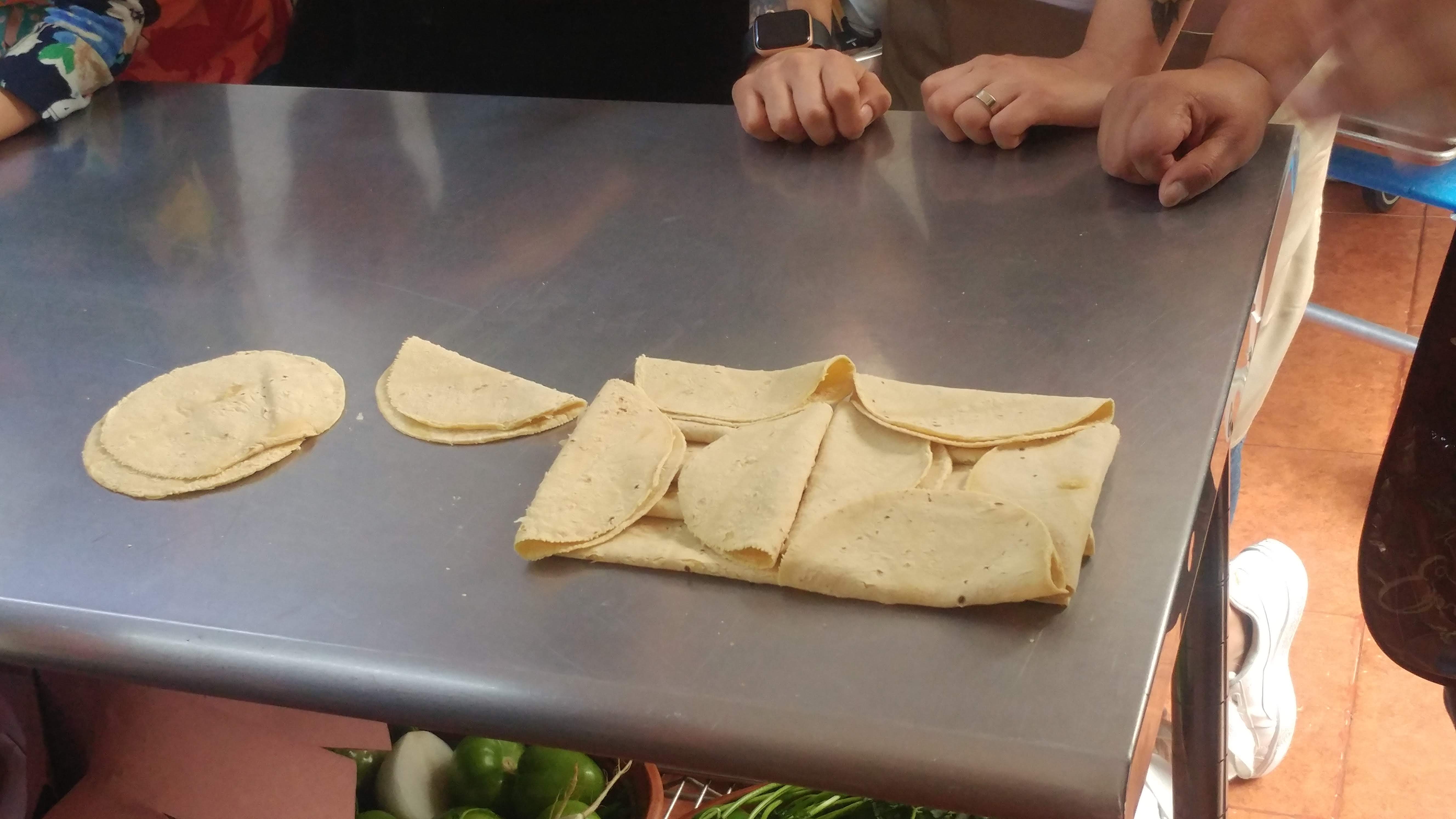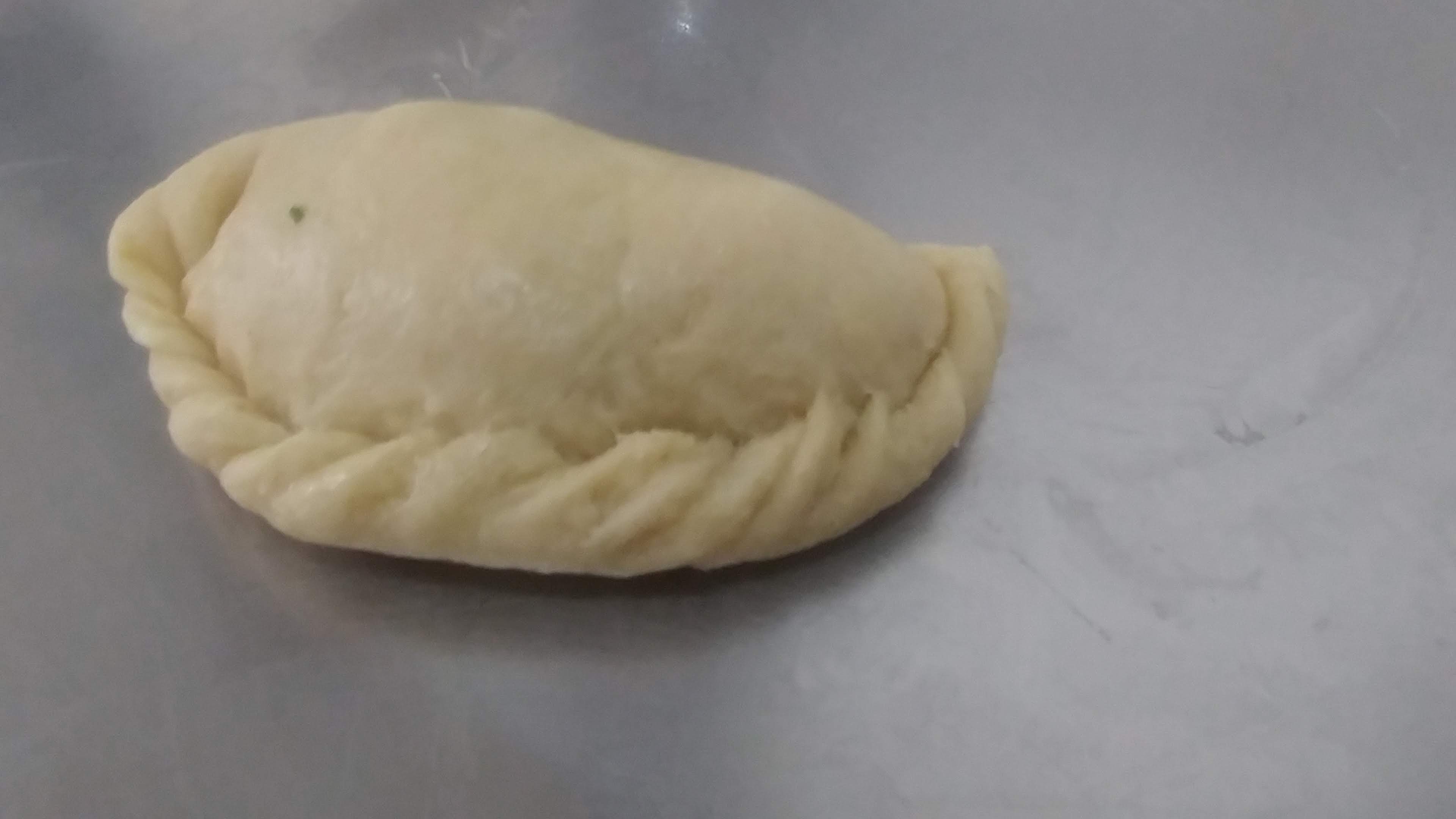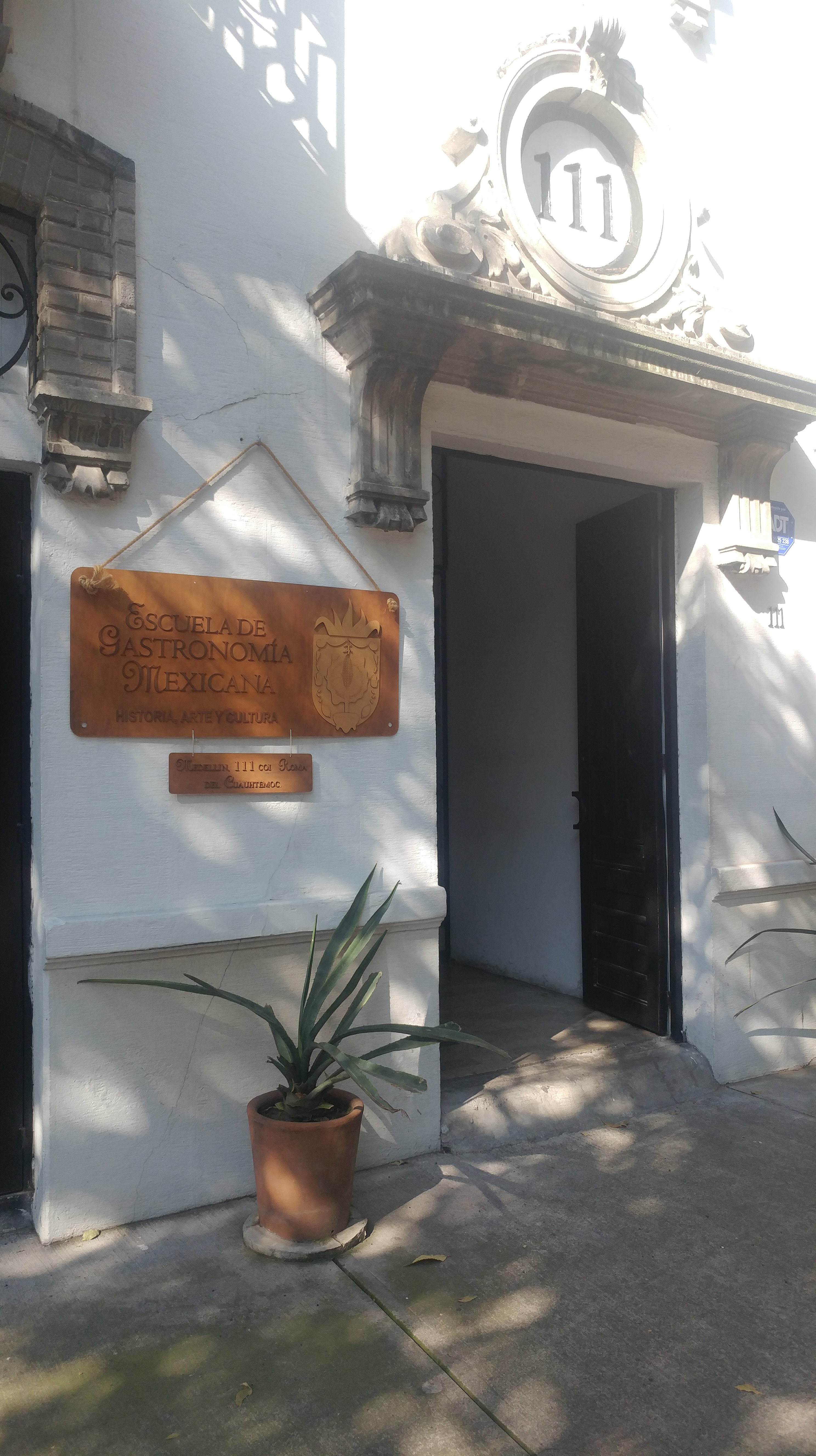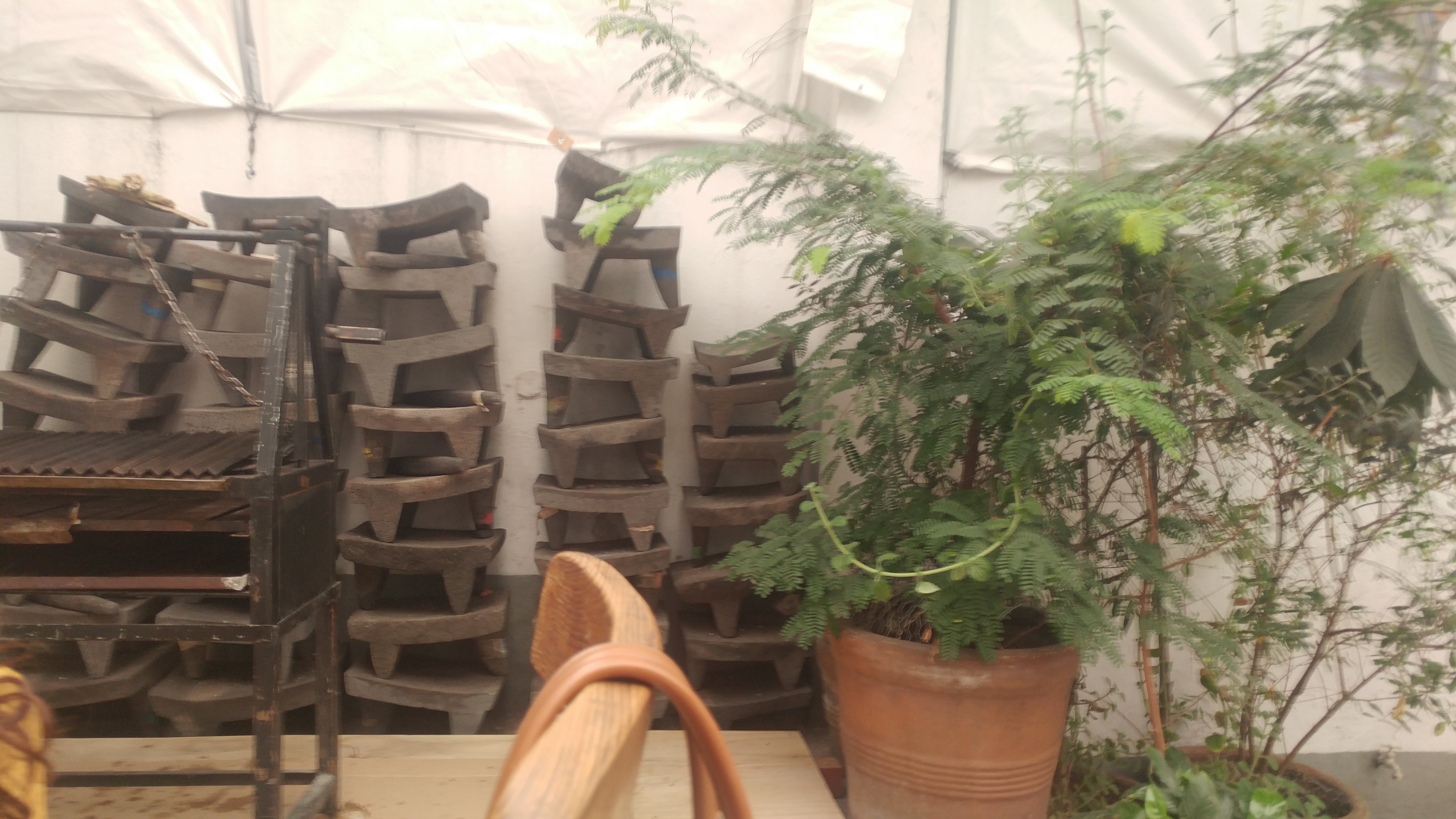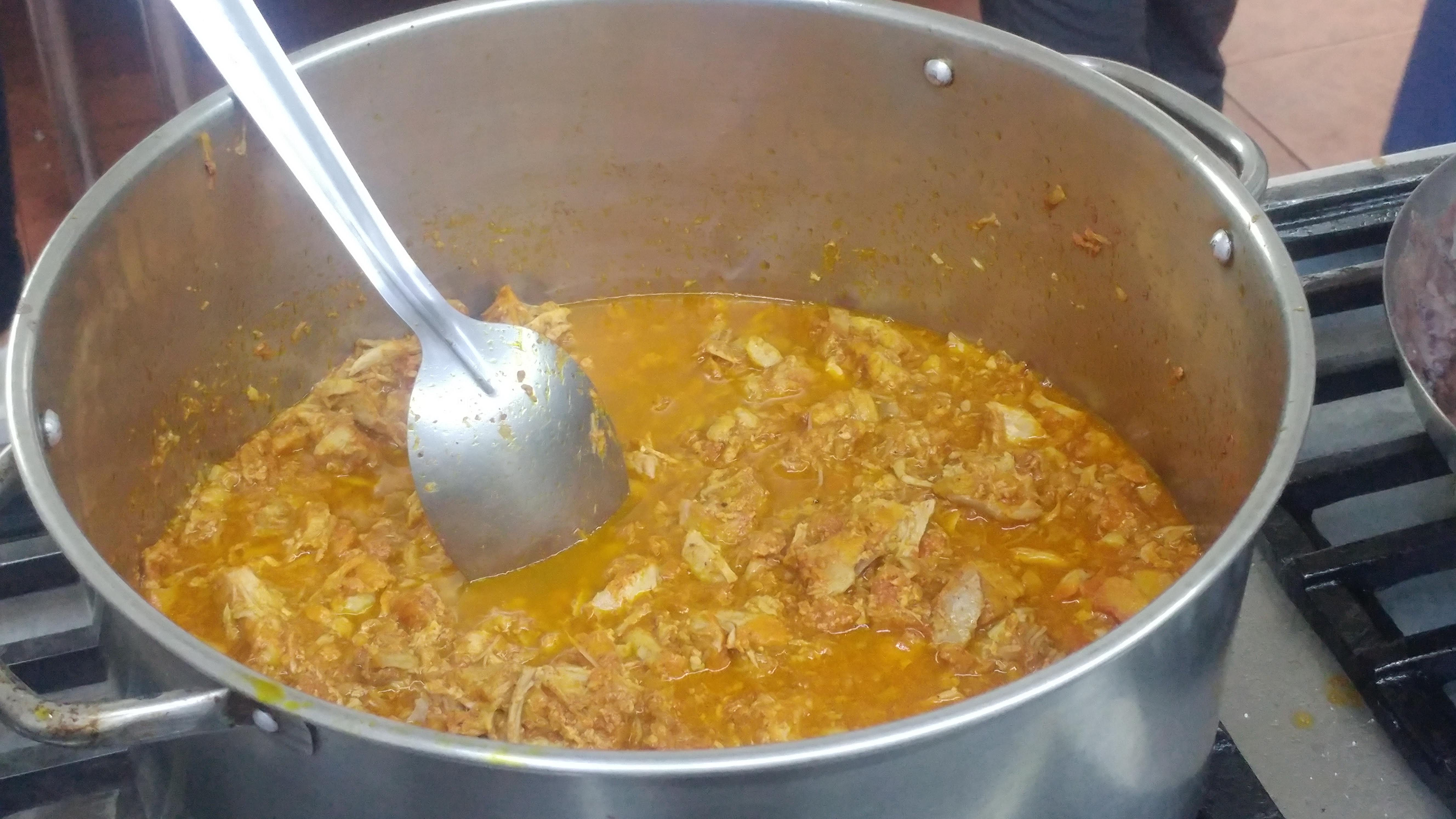After swearing I’d never be back, I did go to La Merced one last time with some classmates this morning. FINALLY found naranja ágria (sour orange).

The market is a lot better when you’re with someone who knows the geography of it, and also when you’re with people who are buying stuff—while they’re haggling with vendors, you get a chance to just stand and gawp, which is what you want to do in the first place but can’t get away with when you’re alone.



We looked at peppers, baskets, and cookware. One classmate wanted a copper pot, and others wanted comals and clay pots, but since I couldn’t bring any of that home in my tiny backpack, I split off from the group and had my first real Ciudad de México rush hour experience, then a very enjoyable day of making tacos al pastor, some interesting enchiladas, ceviche (which I ate—for the SECOND time this trip!) and a bajillion salsas, including some that featured a pepper from my bucket list, chile manzano. It’s quite hot, but it’s so round and cute and perfect that I had to eat it anyway.
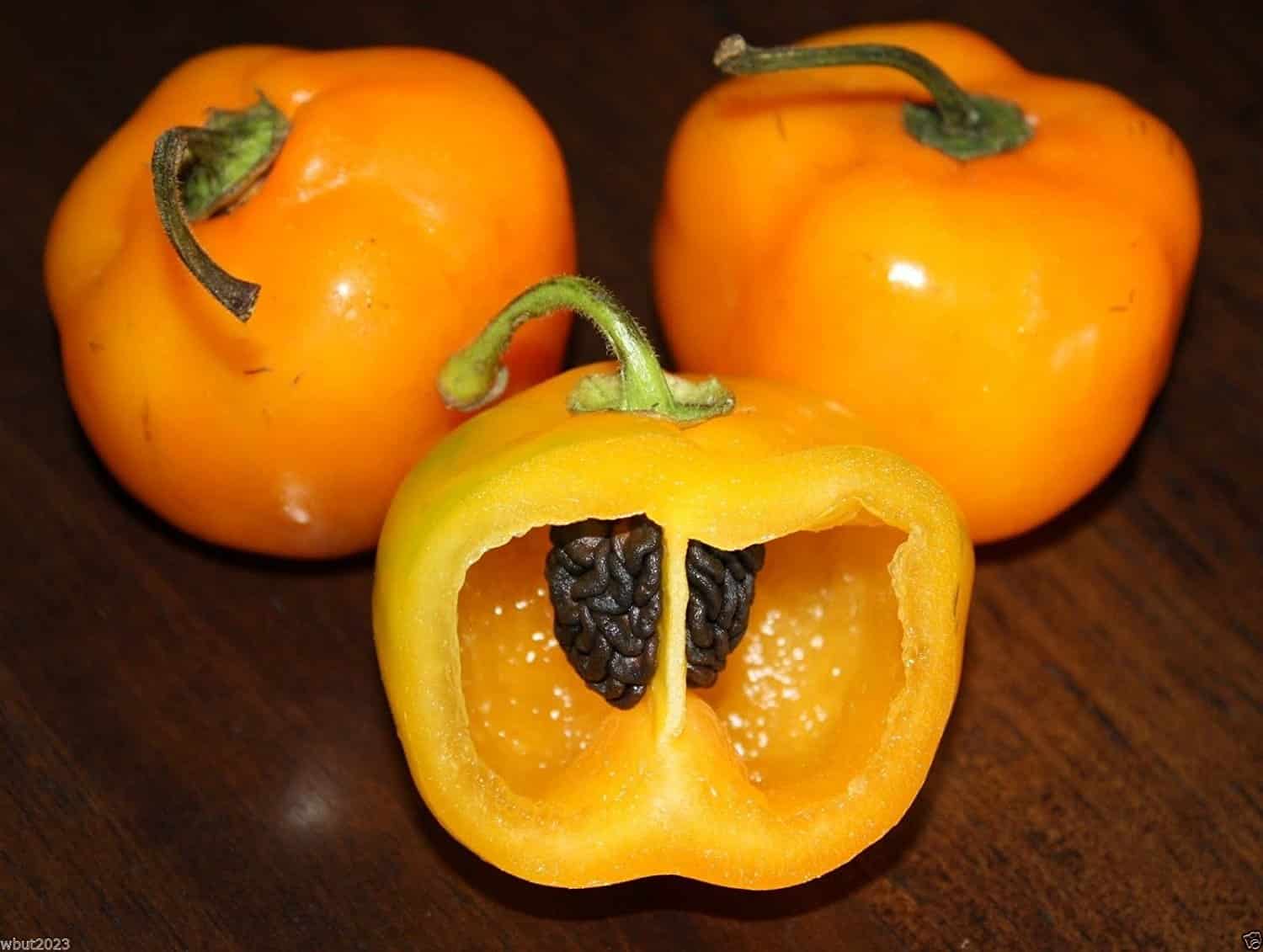

That evening, my classmate (the one that does historical culinary stuff at the Smithsonian) had invited me to Donceles, a street in the historic center that has several blocks of used bookstores, to look for interesting food resources.

People of the world, listen to me. This street is a treasure. Normally, if you tell someone you’re into anthropology of food, the response is some variant of “That’s weird.” Unless they’re a bookseller, in which case they show you the cookbooks, which are mostly—Surprise! Keto! Again!
Not here.
We visited 3 shops before our baggage allowances gave out, and at each of them we found at least 2-3 gems. One of them, which I take credit for finding even though it ultimately went home with my classmate, was a side-by-side photocopy and transcript of a 1785 cookbook of New Spain. It was really interesting to see what recipes had already existed in that time and how the way of writing recipes has changed. Though it was a great find, ultimately, a book like that belongs with the Smithsonian employee, not on my bedroom bookshelf. She promised to send me scans, though. I also found the report that Mexico’s government put together when they were applying to have Mexican cuisine recognized as intangible cultural heritage by UNESCO (a distinction it received in 2010), as well as Corn: Institutional Policy and Agriculture. Every shop also had books specializing in different regions, driving home how much more present food is here in people’s cultural identities than it is for us.
In class this week, we had made a mole recipe that specified a particular brand of chocolate, and the chef let us try some of it plain before we put it in the sauce. It’s a small-batch, traditional-esque (as traditional as a chocolate bar can be, I guess) operation, and the chocolate is distinctive for only having four ingredients–cacao, sugar, almonds, and cinnamon– and the fact that the sugar is undissolved, giving it a texture that is by turns melty and crackly-crystalline.

I decided this was a must-bring-home, but that turned out to be easier said than done. When I asked where to find it, the chef advised me to go to the market and find a Oaxacan (By what, just marching around la Merced shouting “¡Señor! Es usted oaxaqueño”?). I decided to go the American route and search online. That’s how I learned that the stuff was sold in just 3 places in all of Mexico City, all of which were way out in the suburbs (in retrospect, I think these were commercial distributors). Upon hearing my dismay, a classmate said she was going to visit family out that way, and she offered to pick some up and ship it to me once we’d both gotten back to the US. It was a very generous offer, but also a bit silly.
I had just about given up on ever finding it when my classmate and I were walking back to the subway from Donceles and passed a place called Cafe Xocolatl. I stuck my head in, and lo and behold, a whole wall of the chocolate I was looking for! I bought a kilo.


